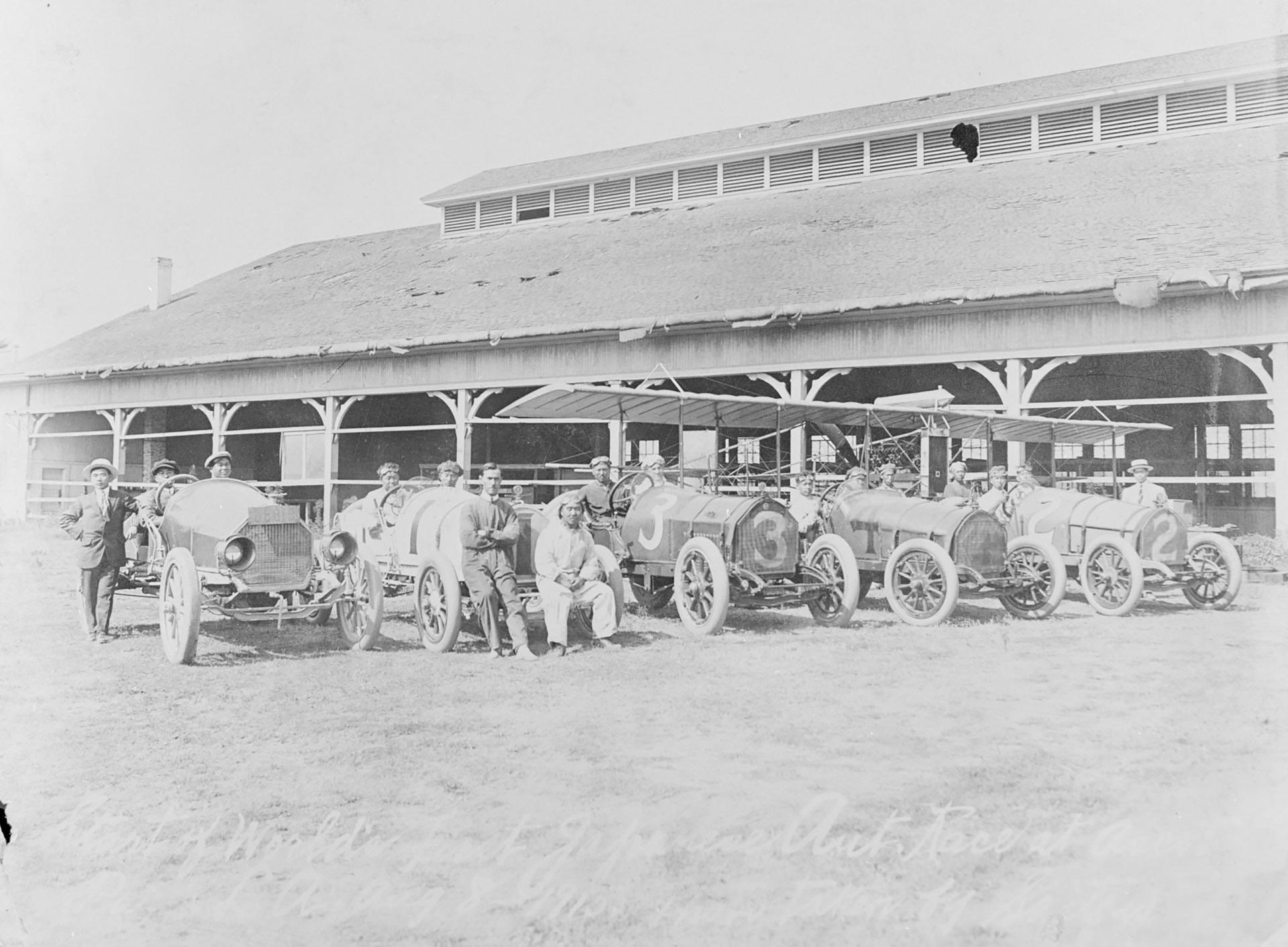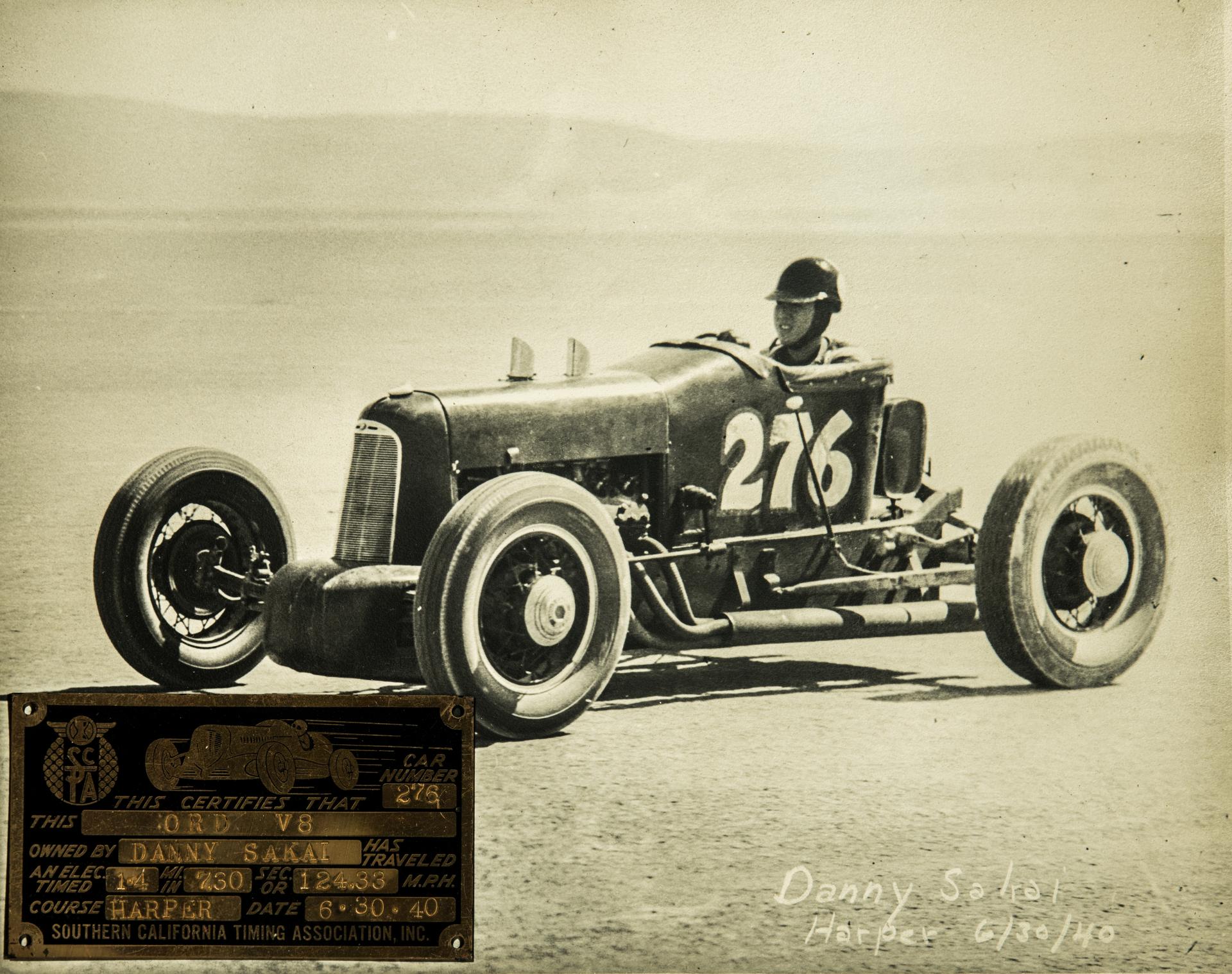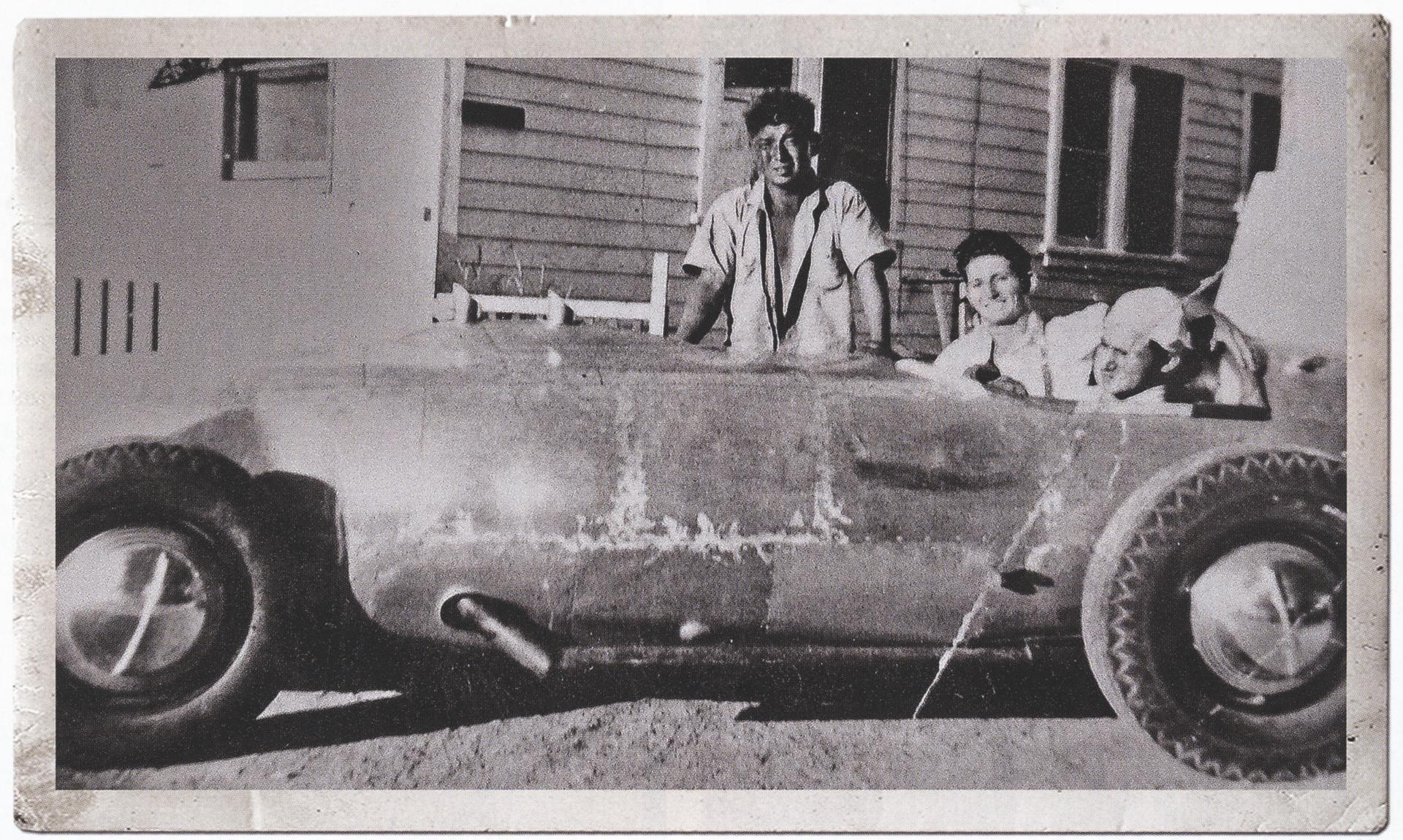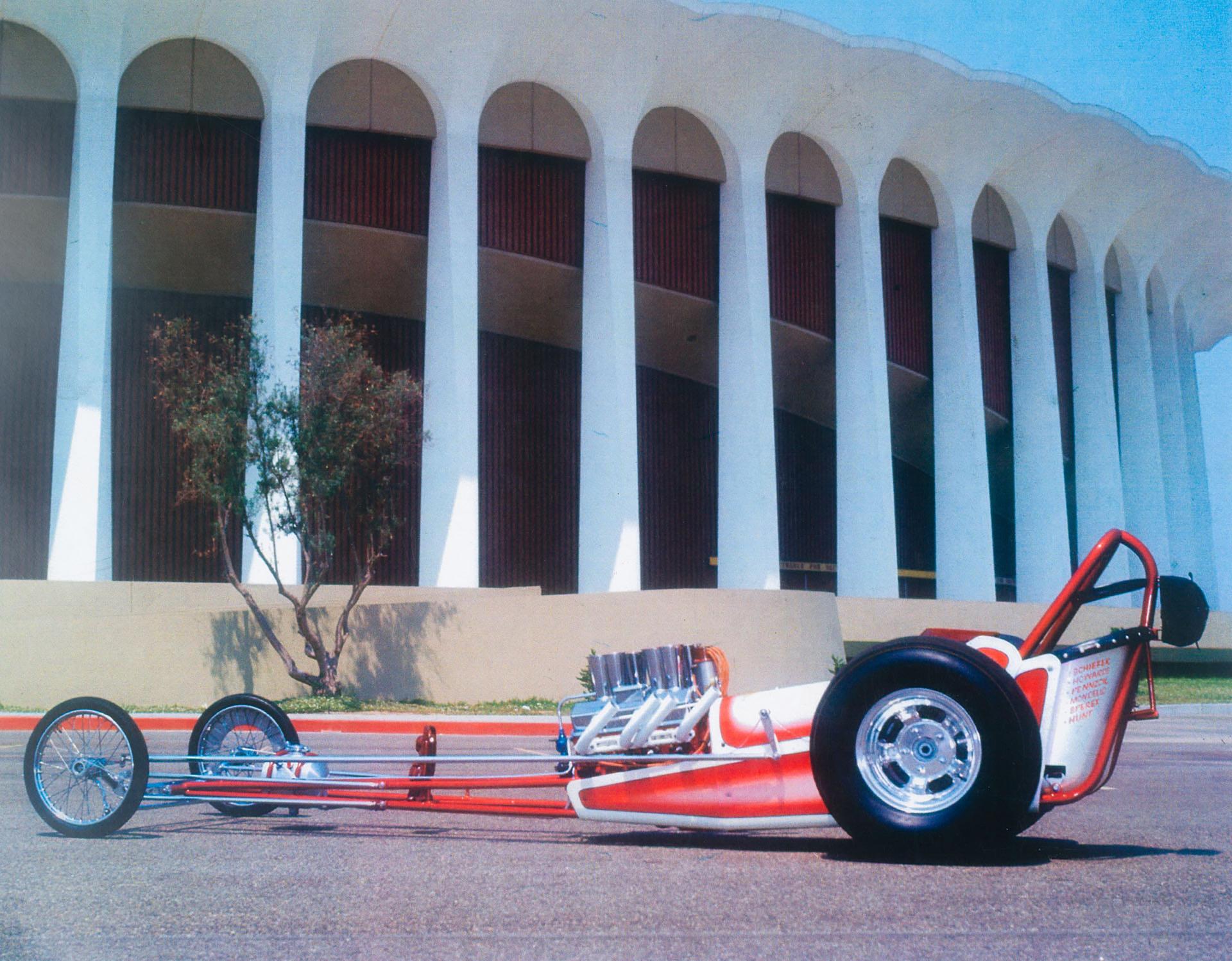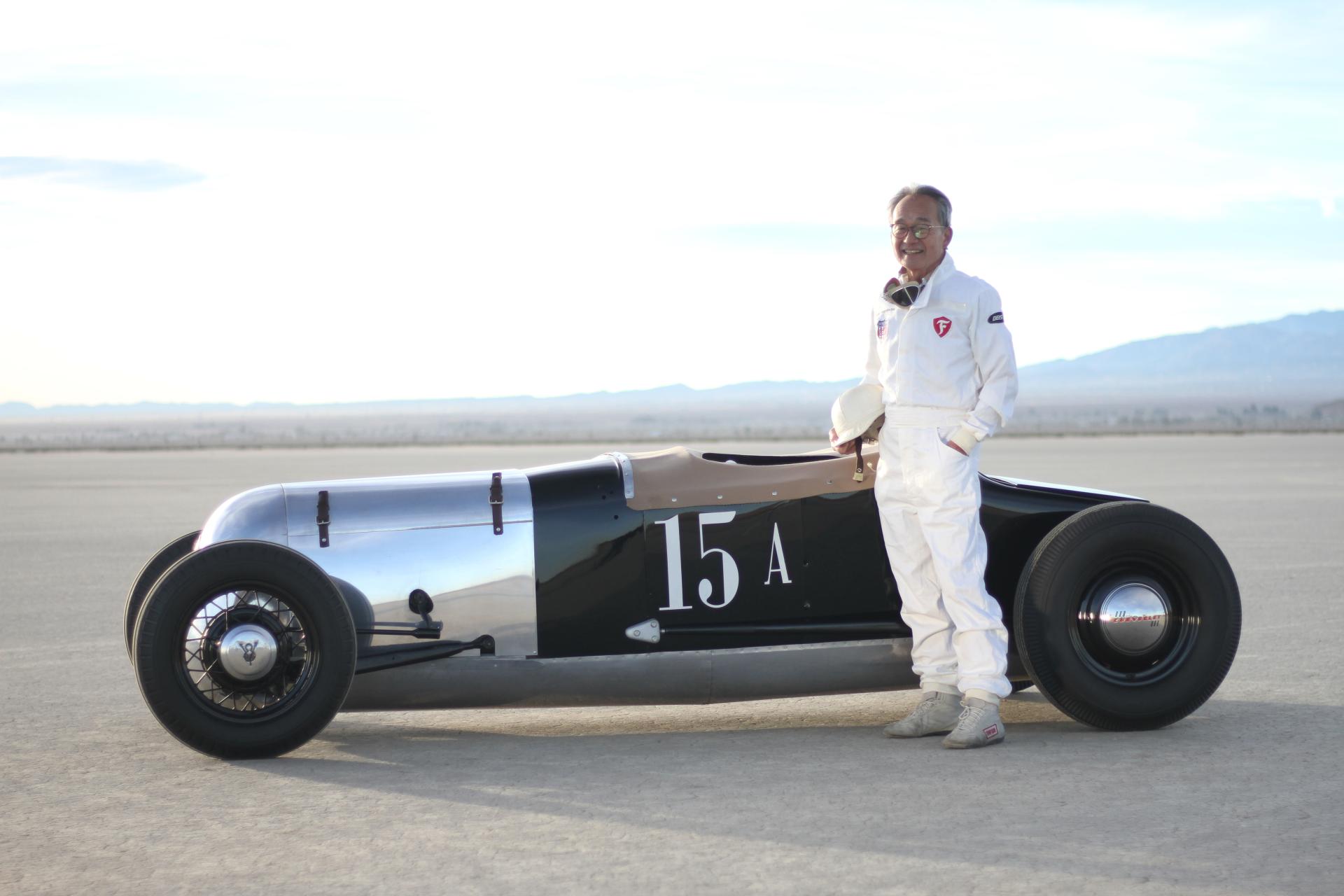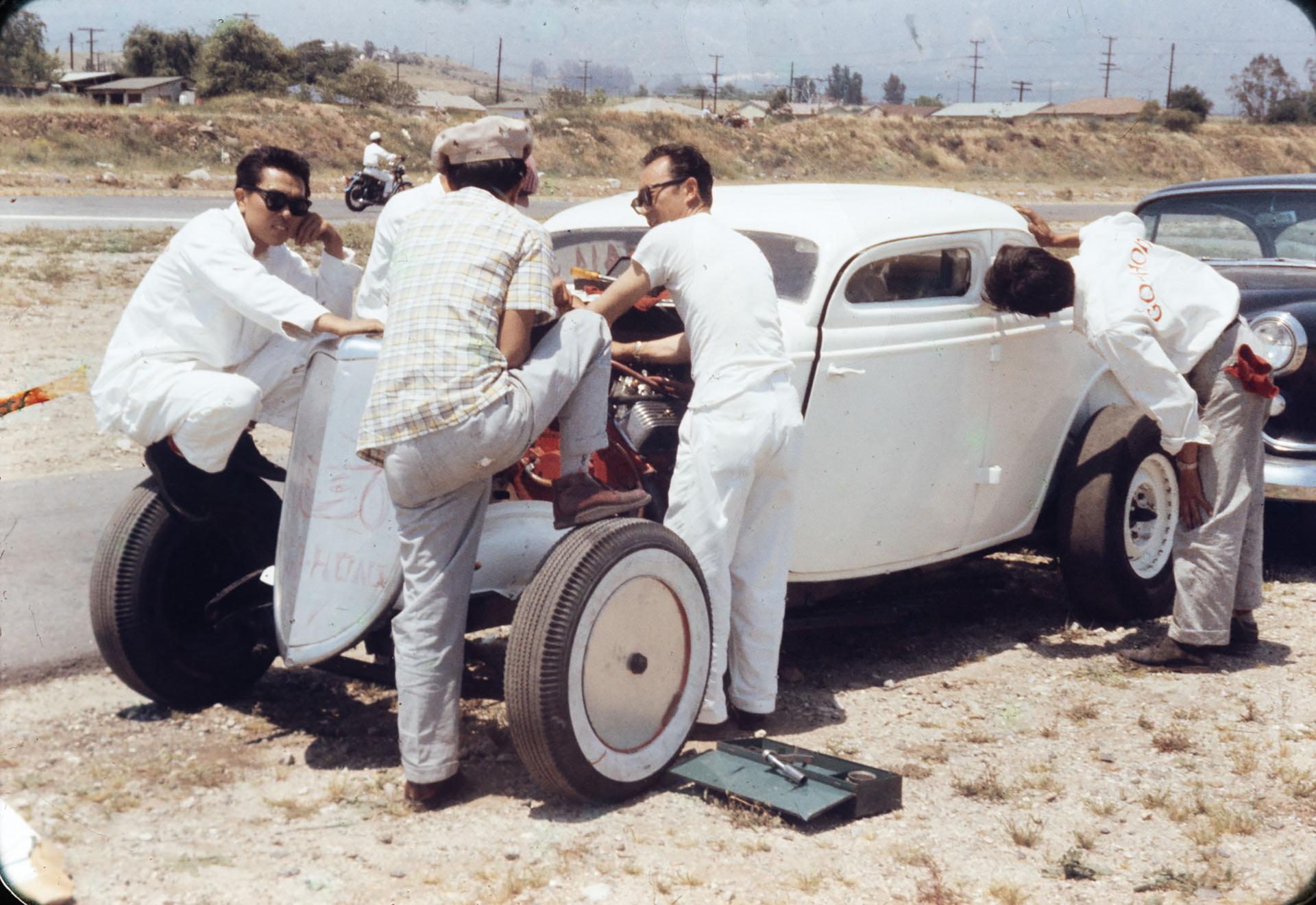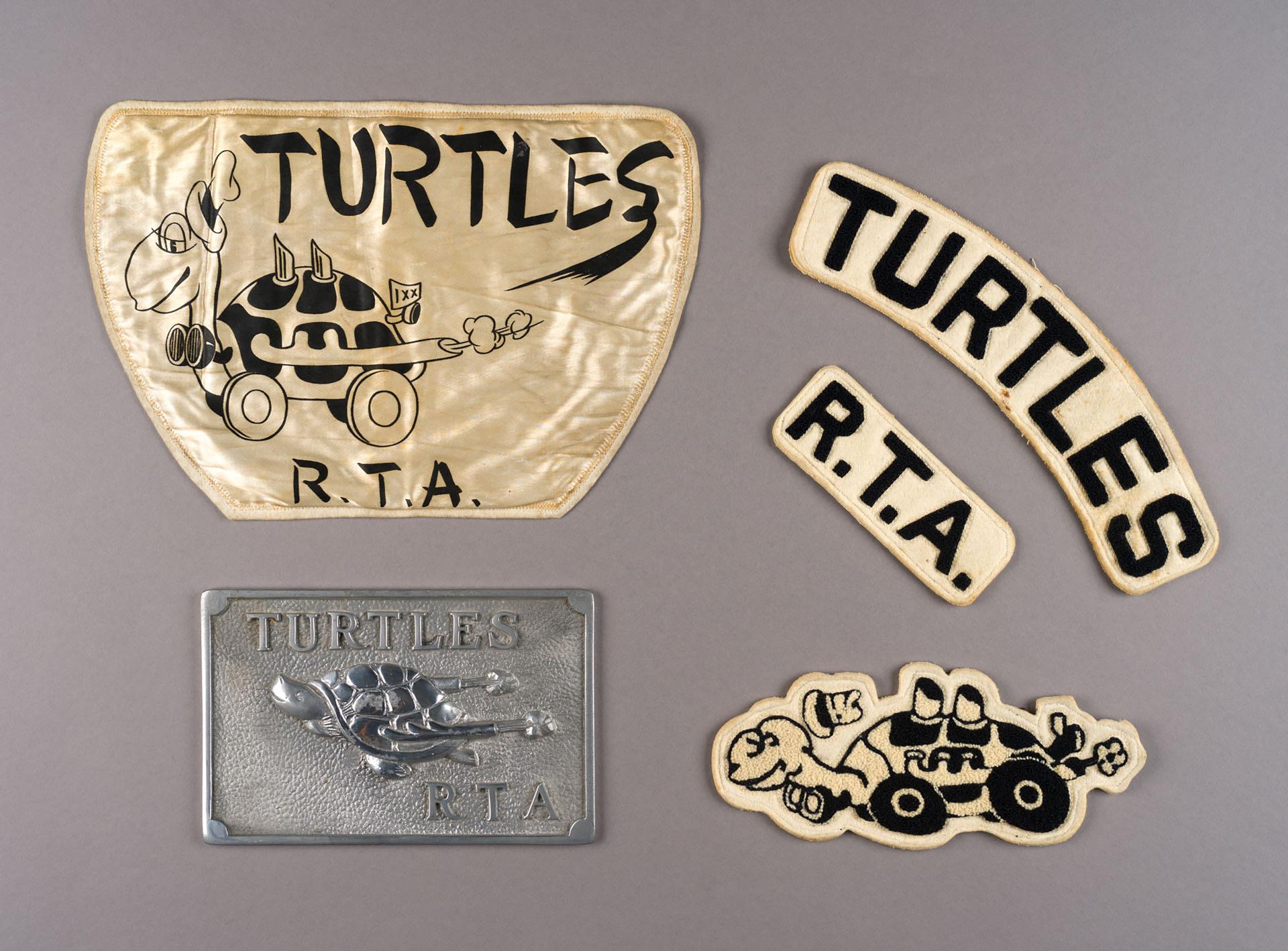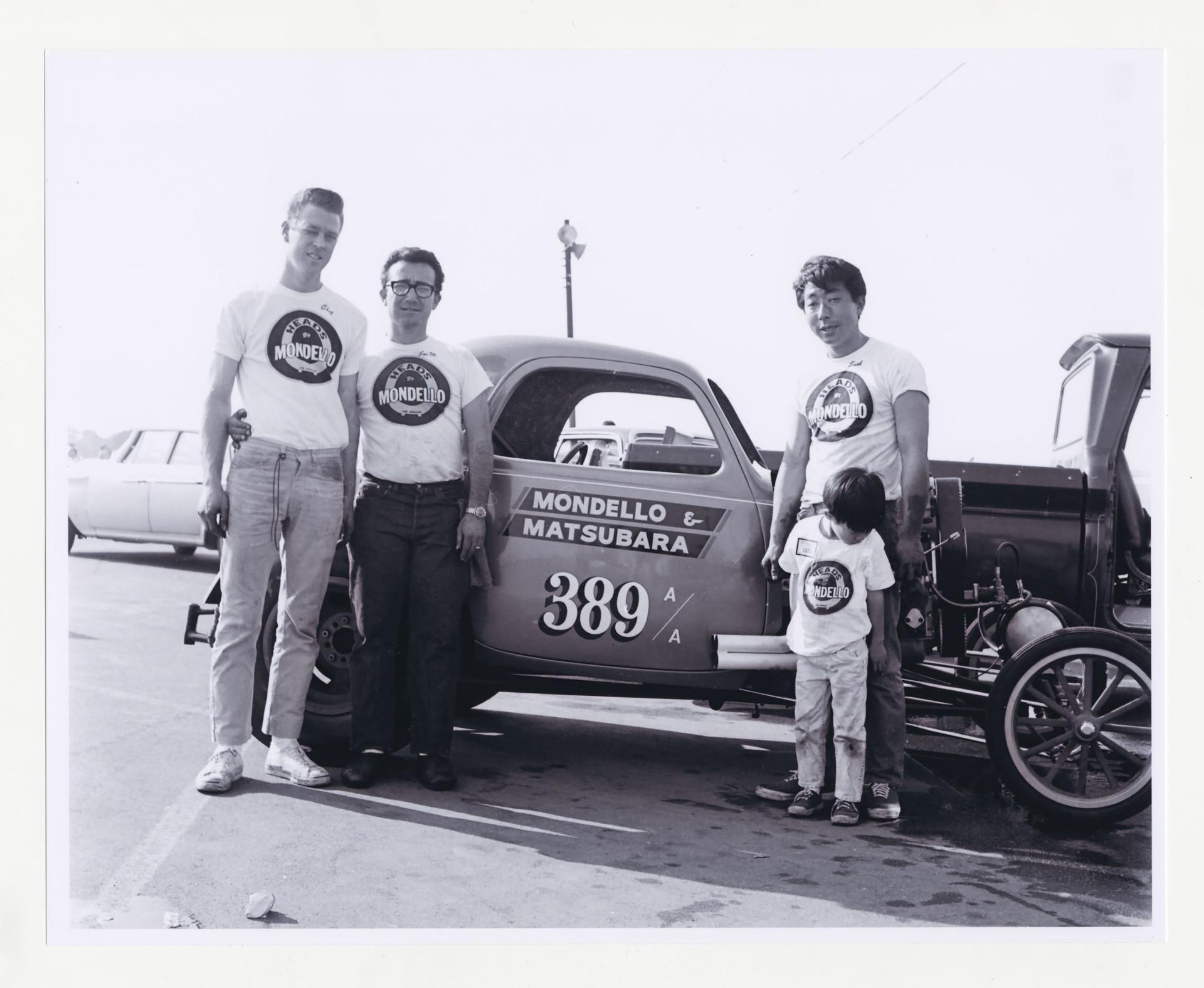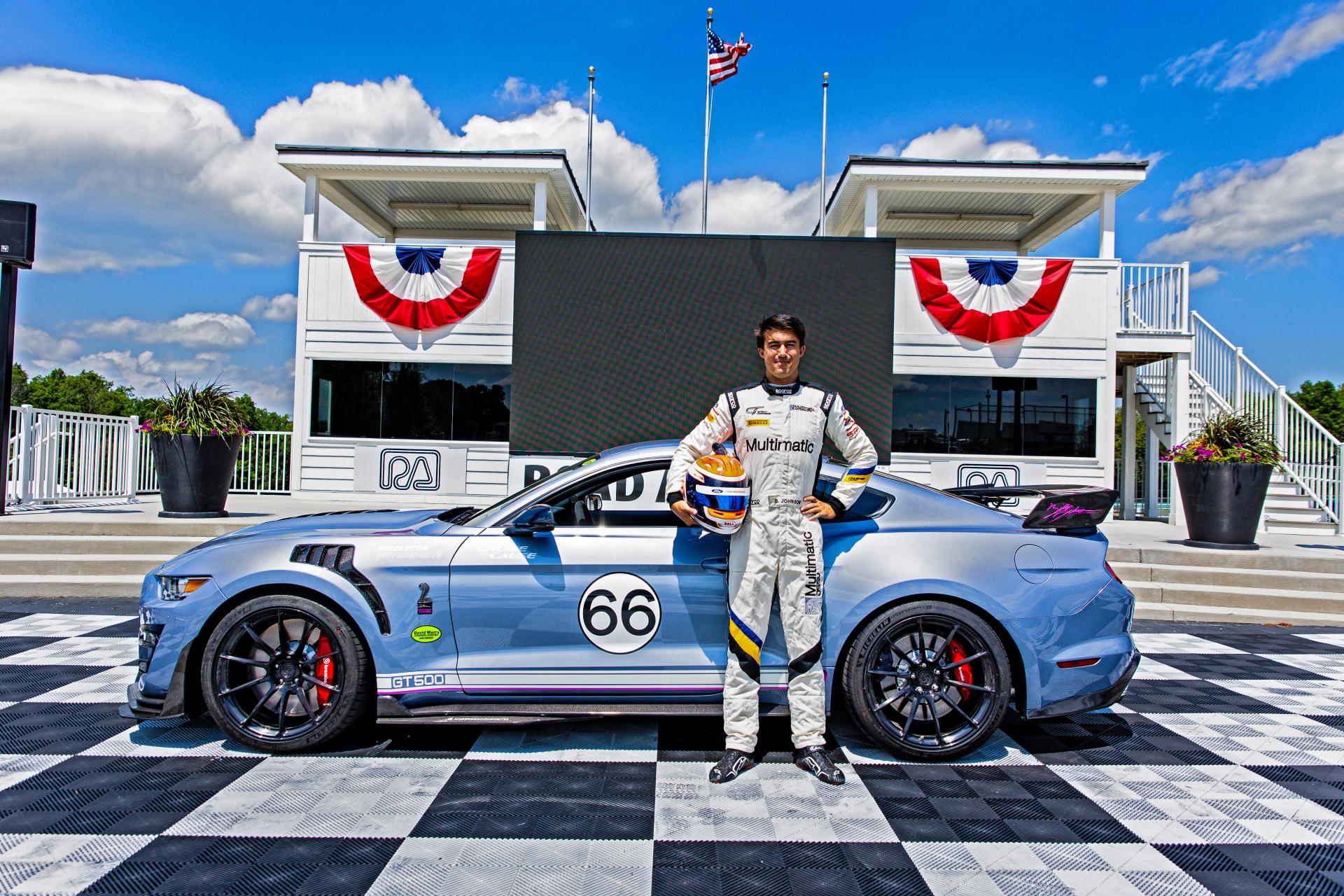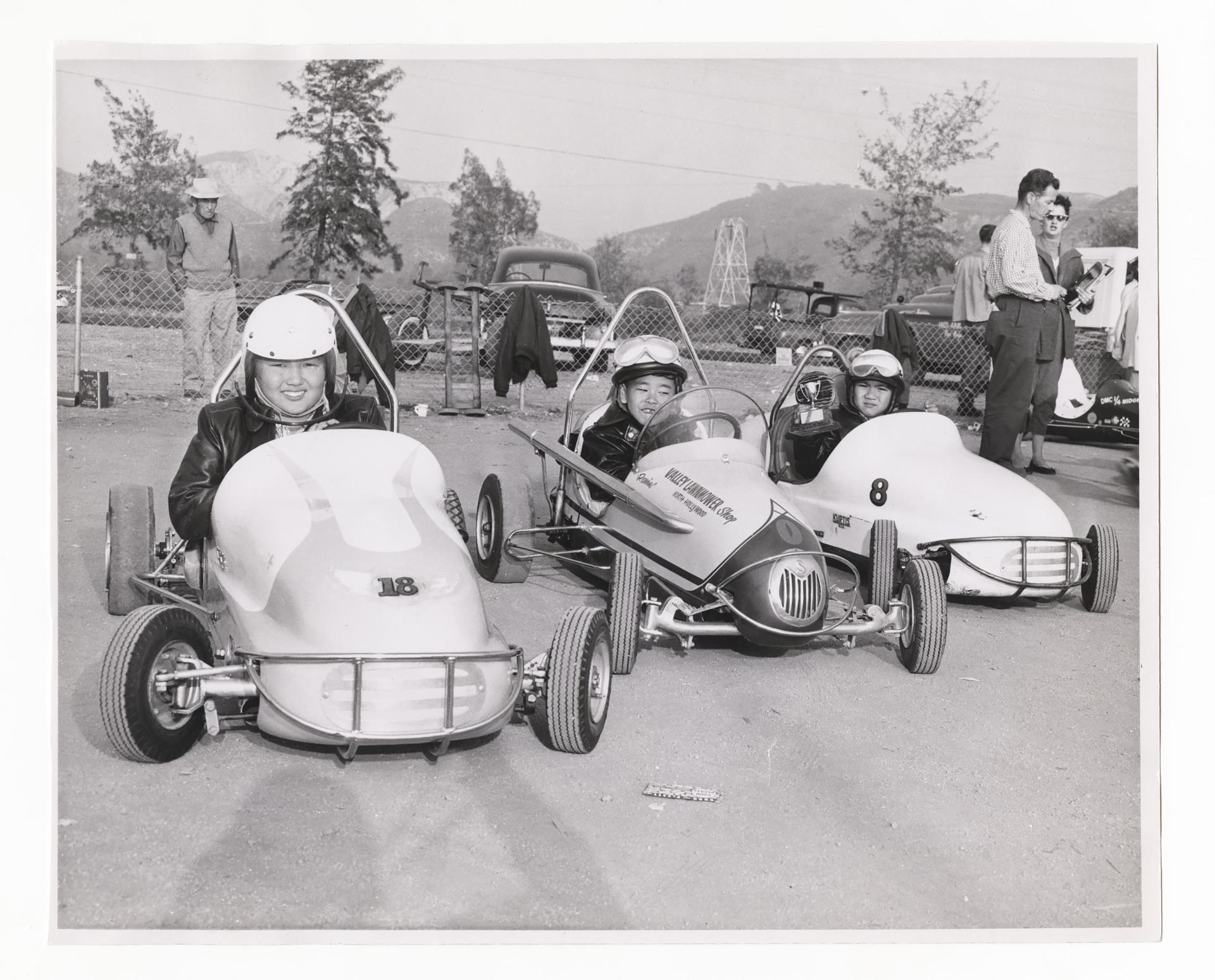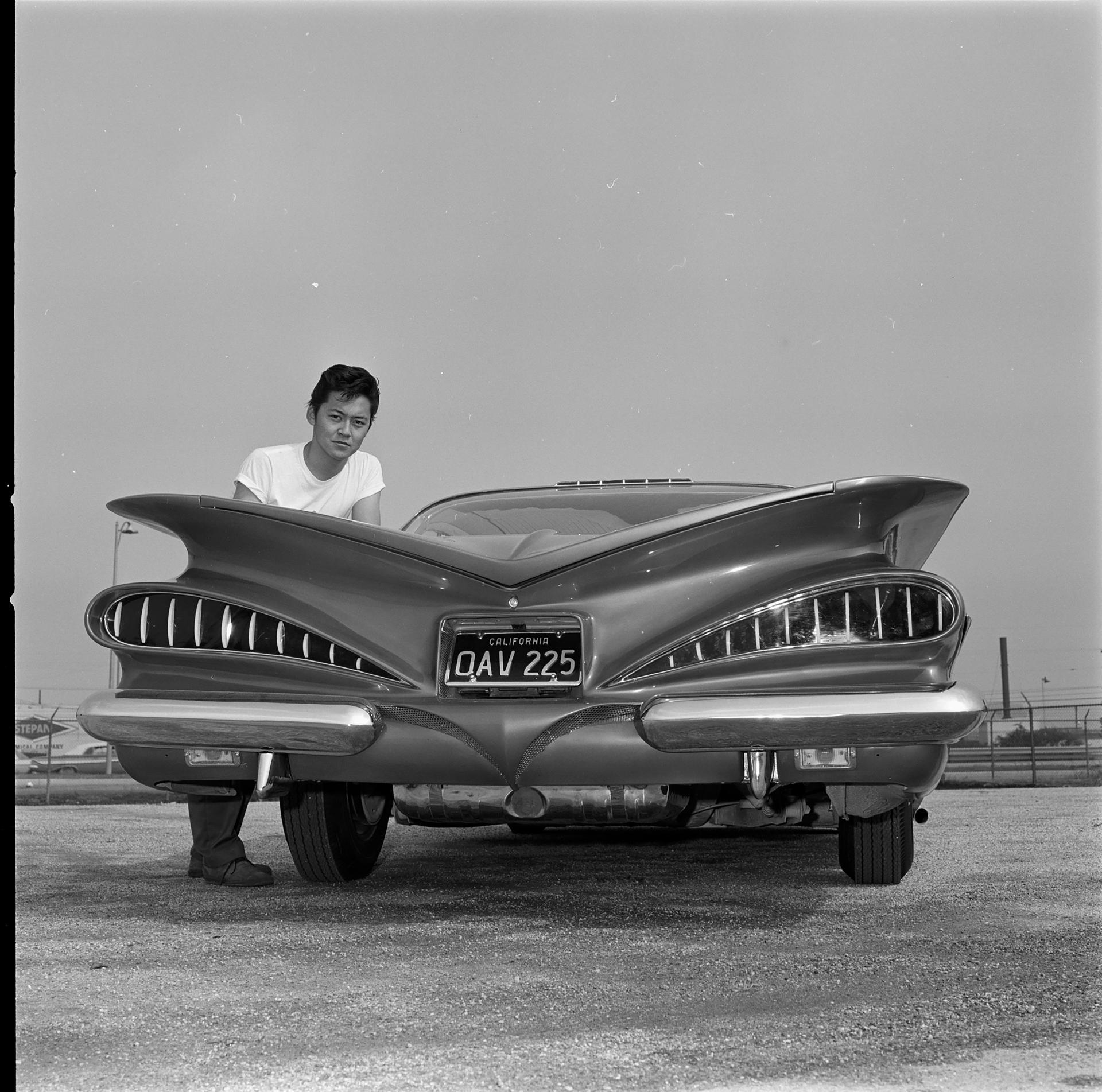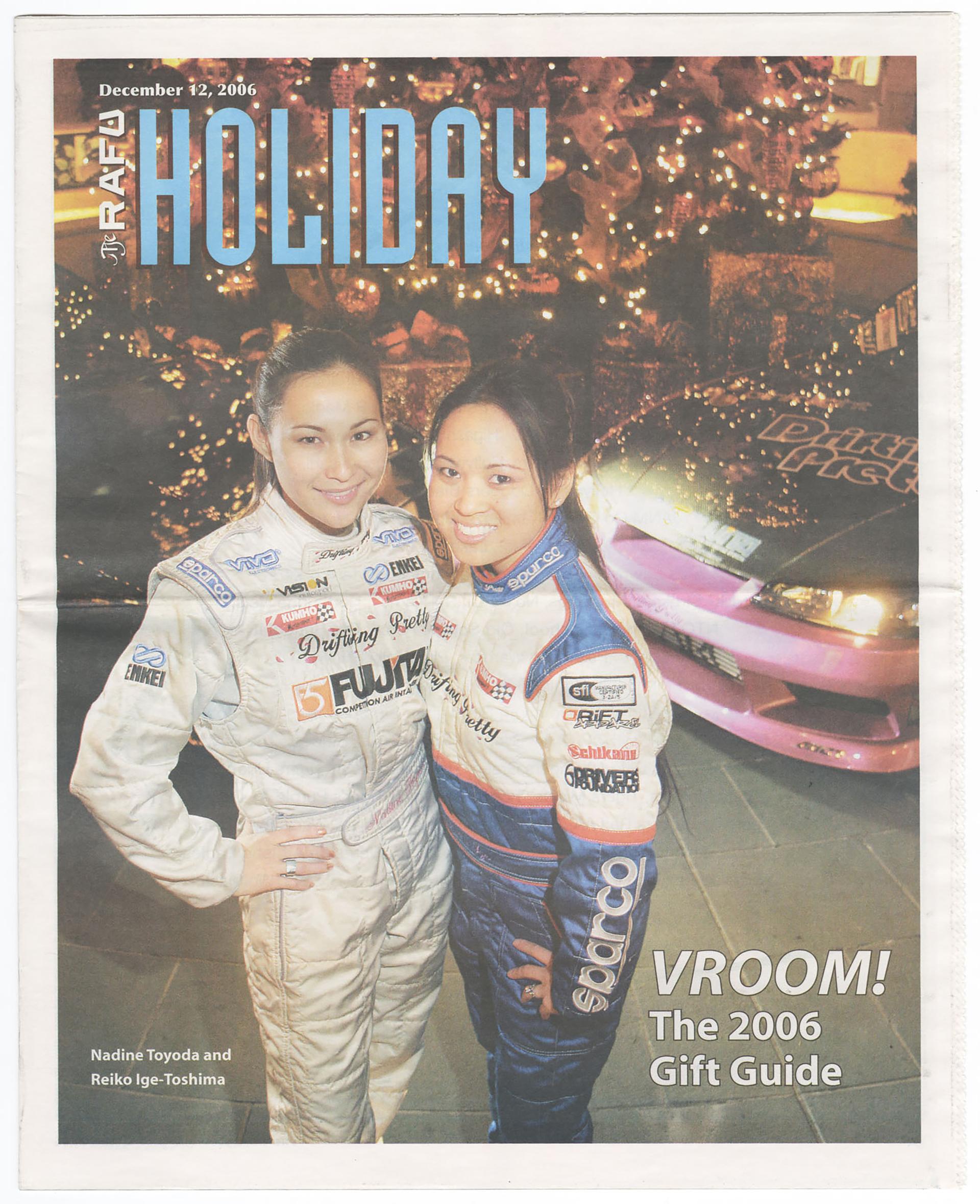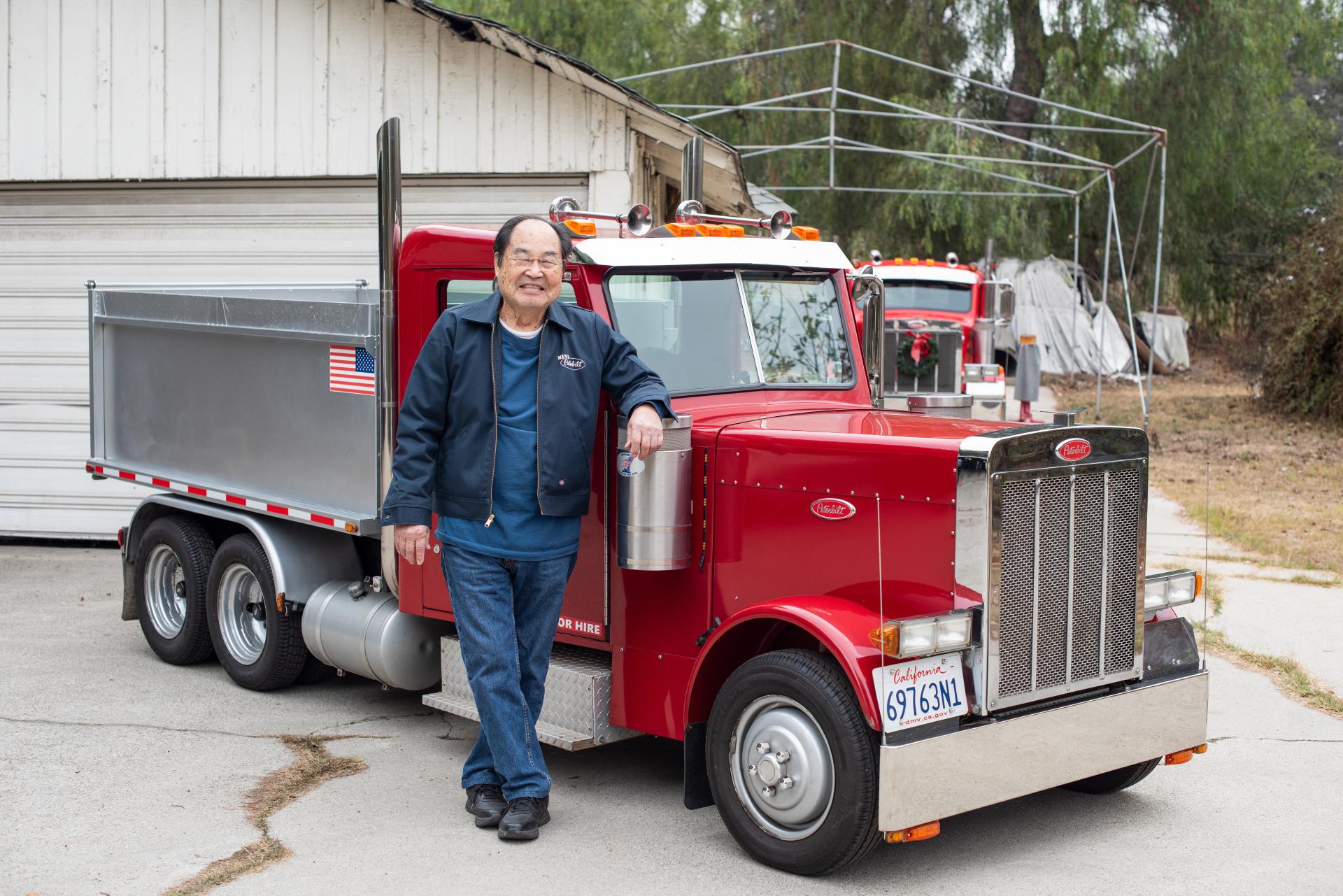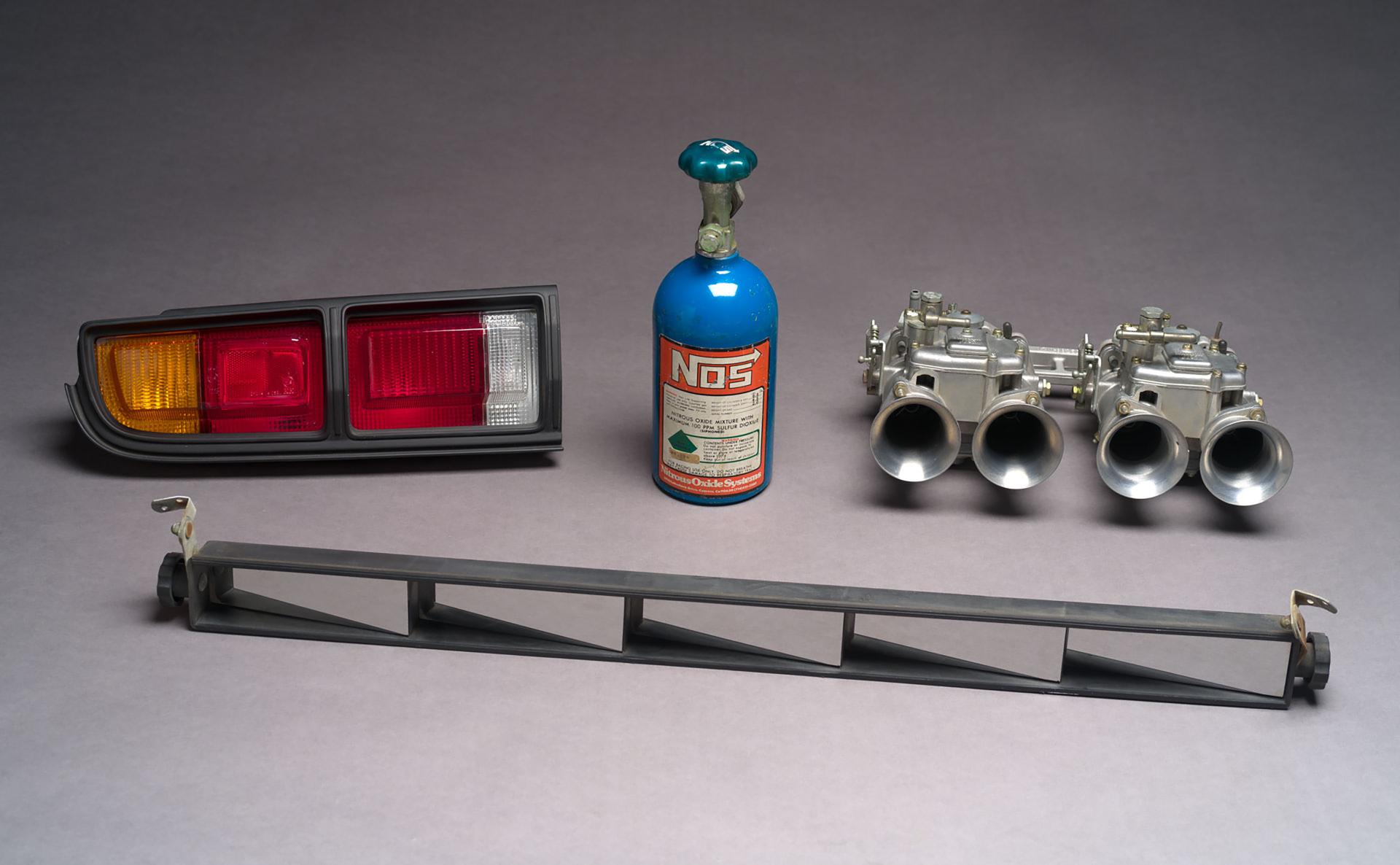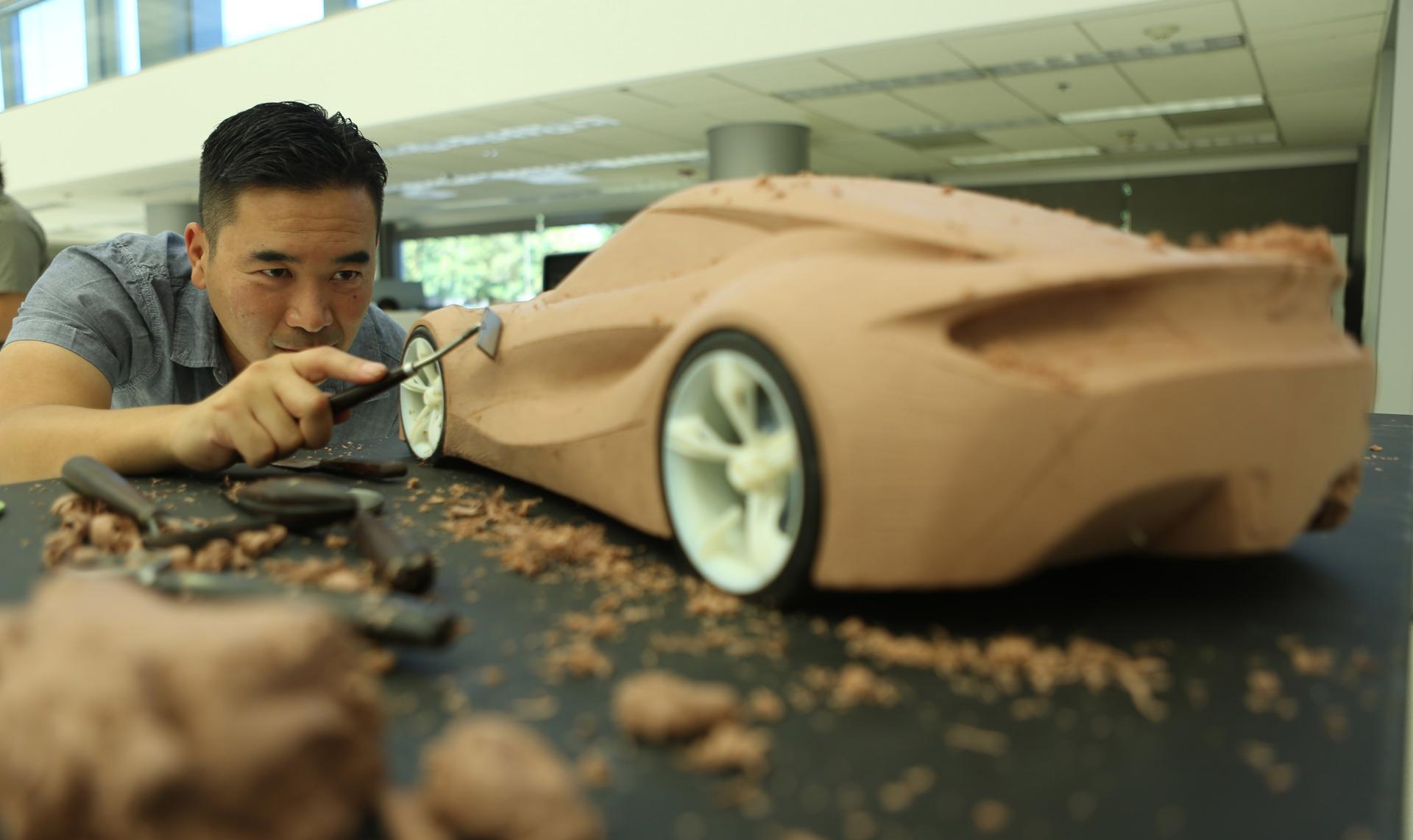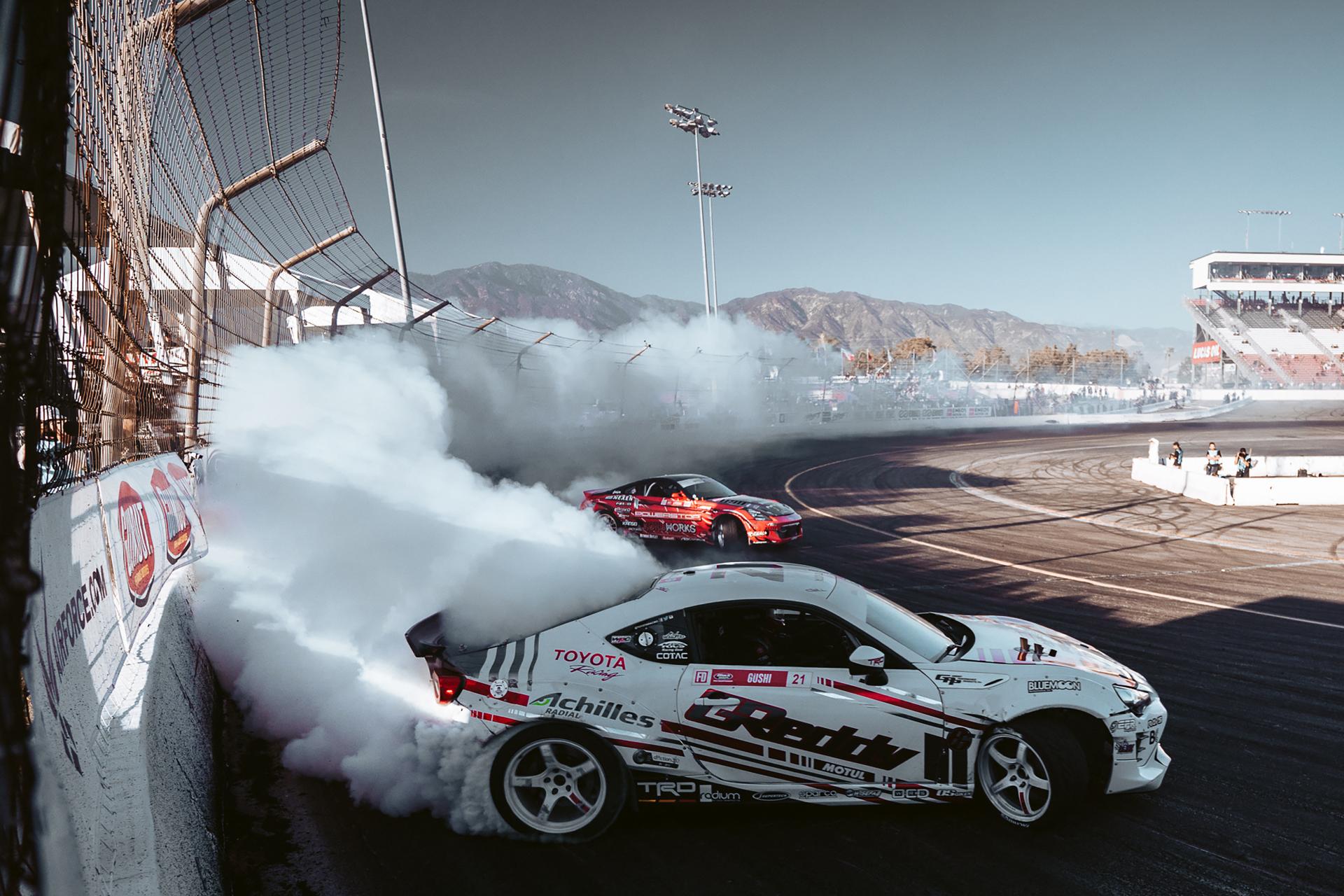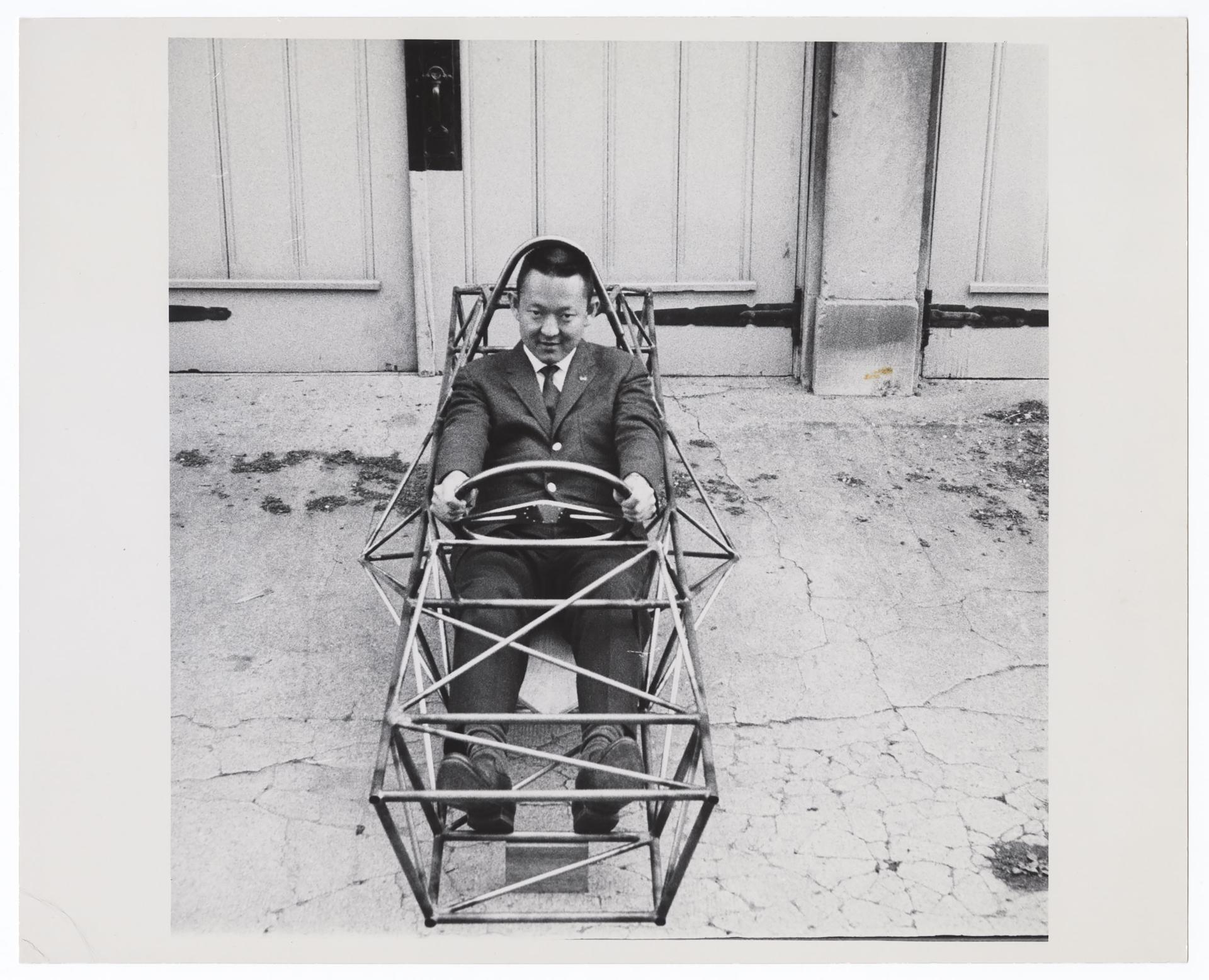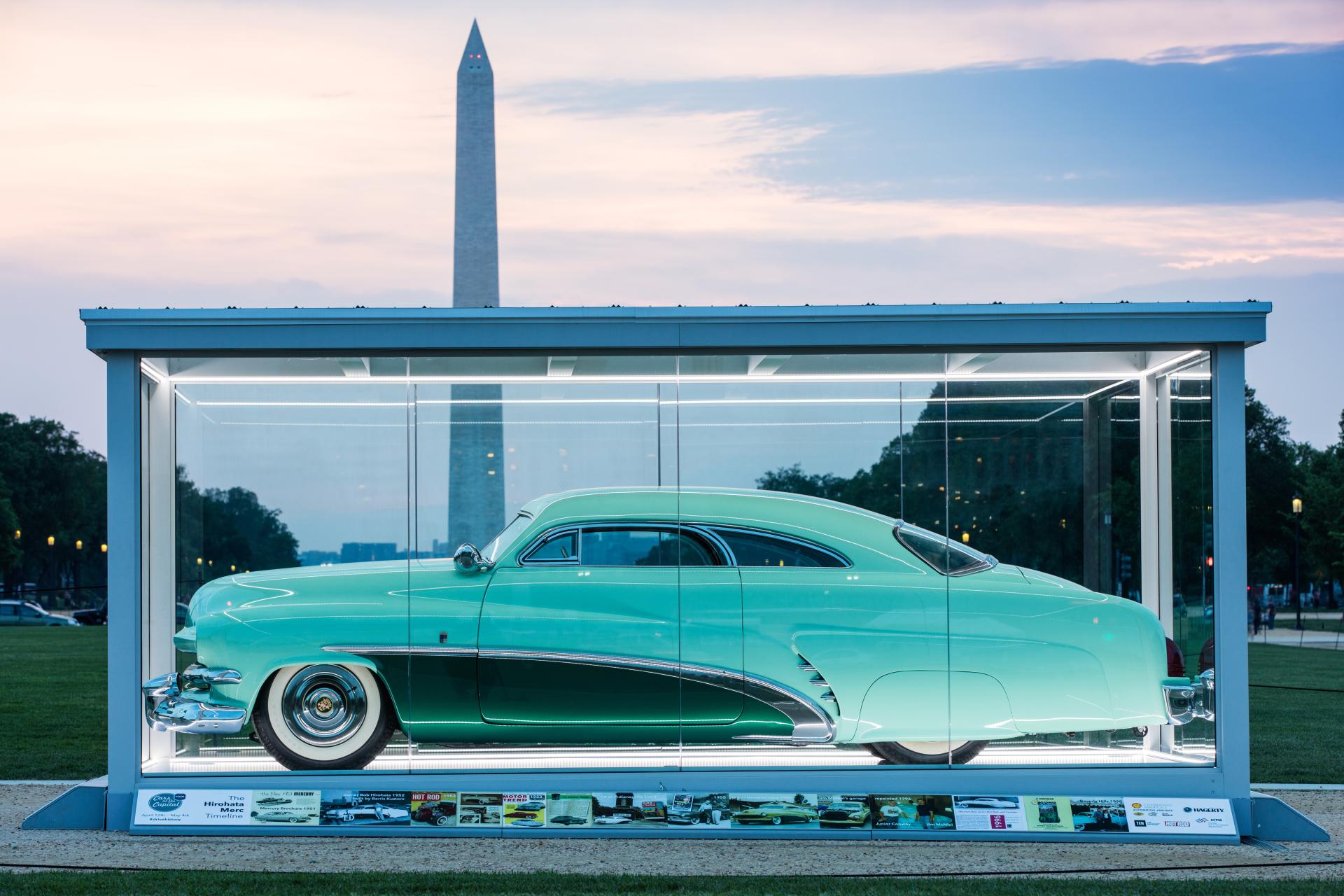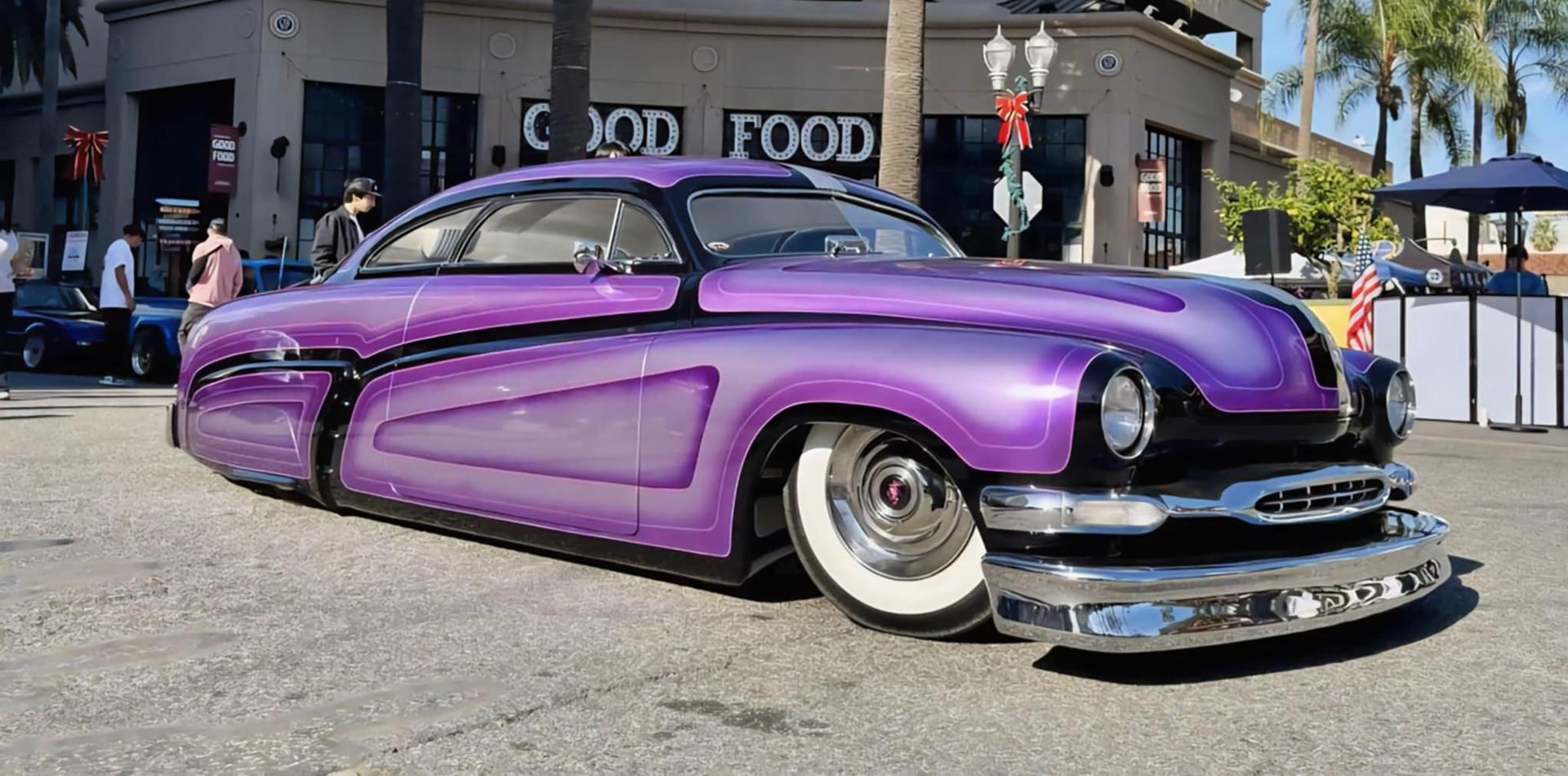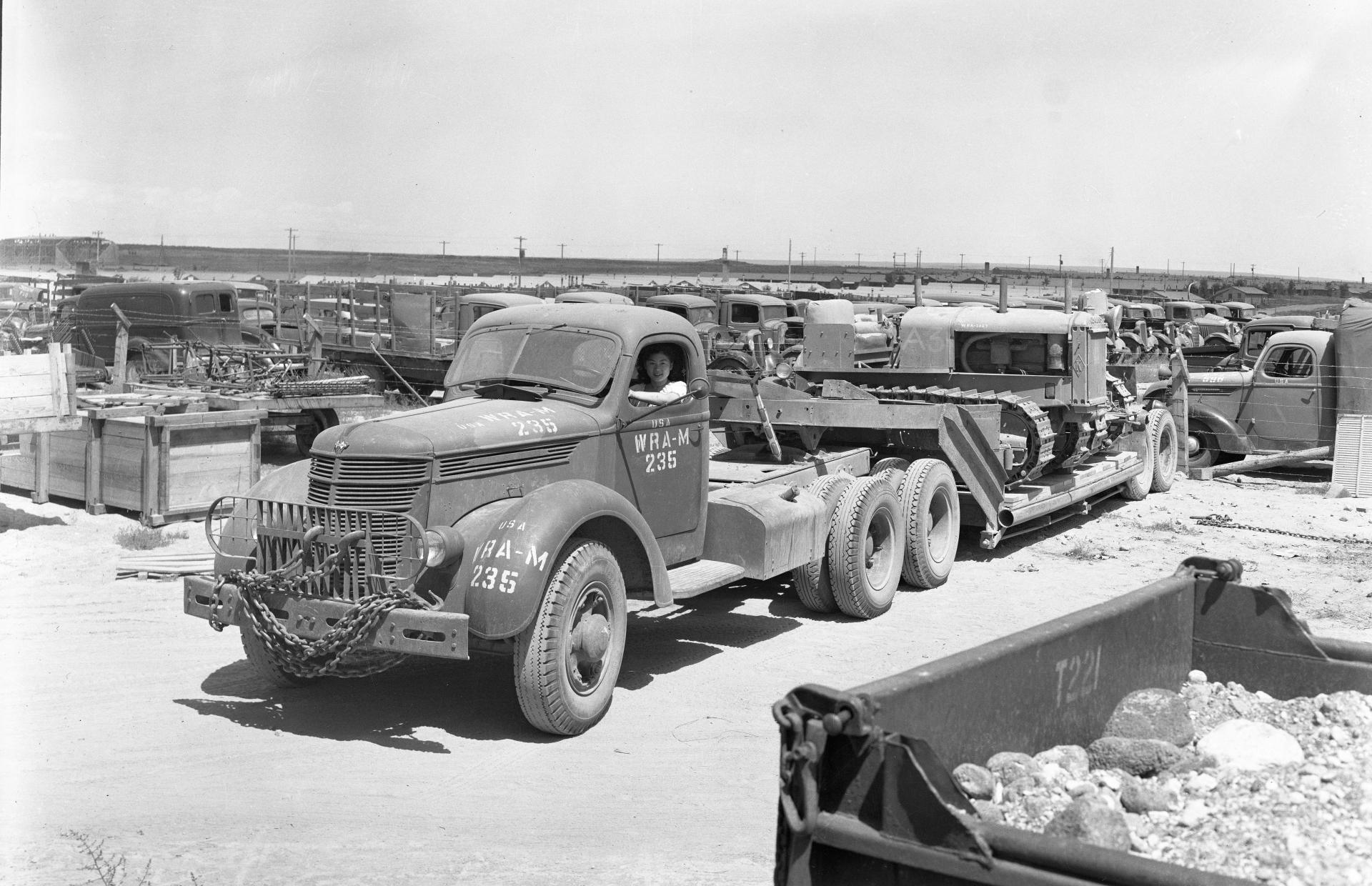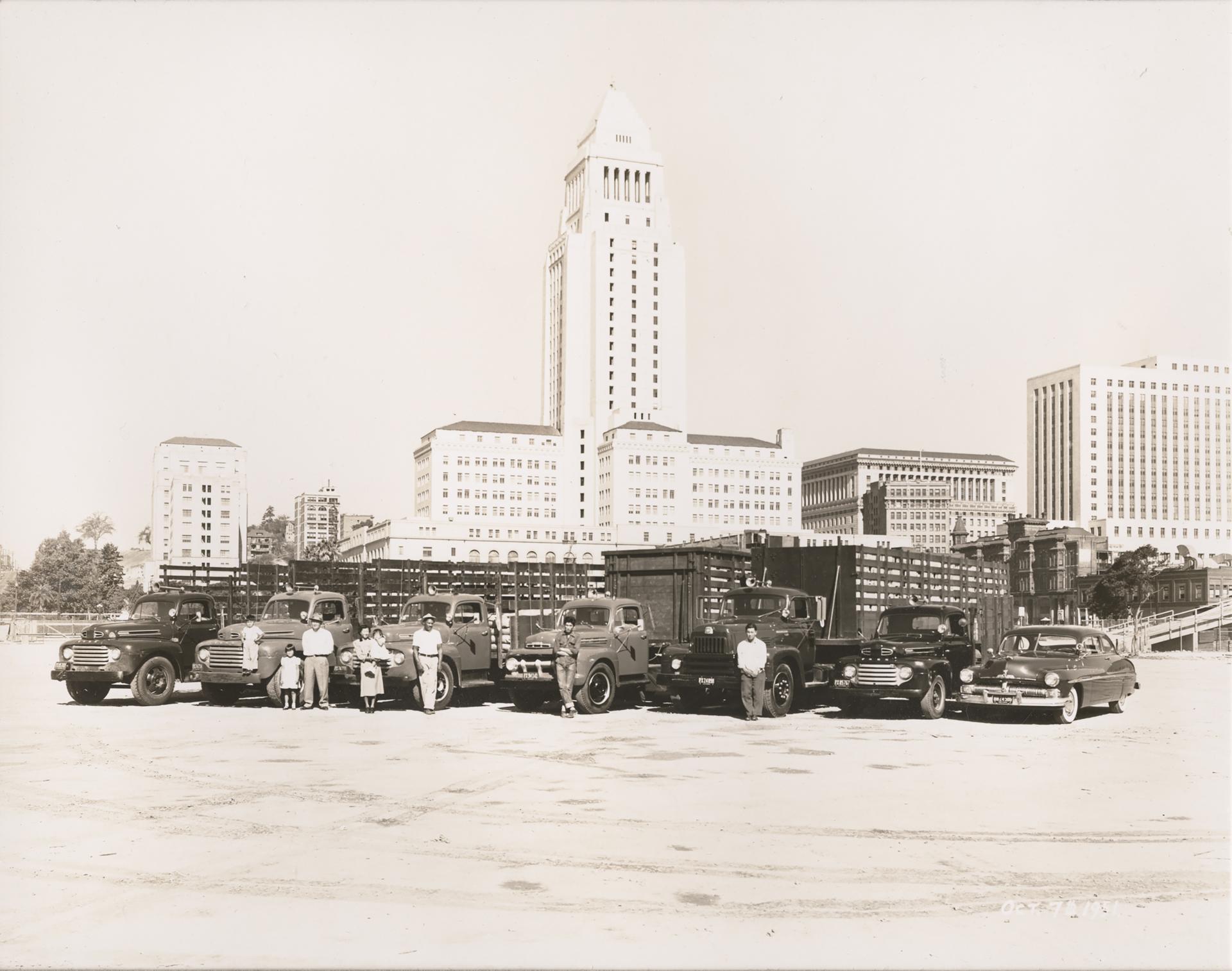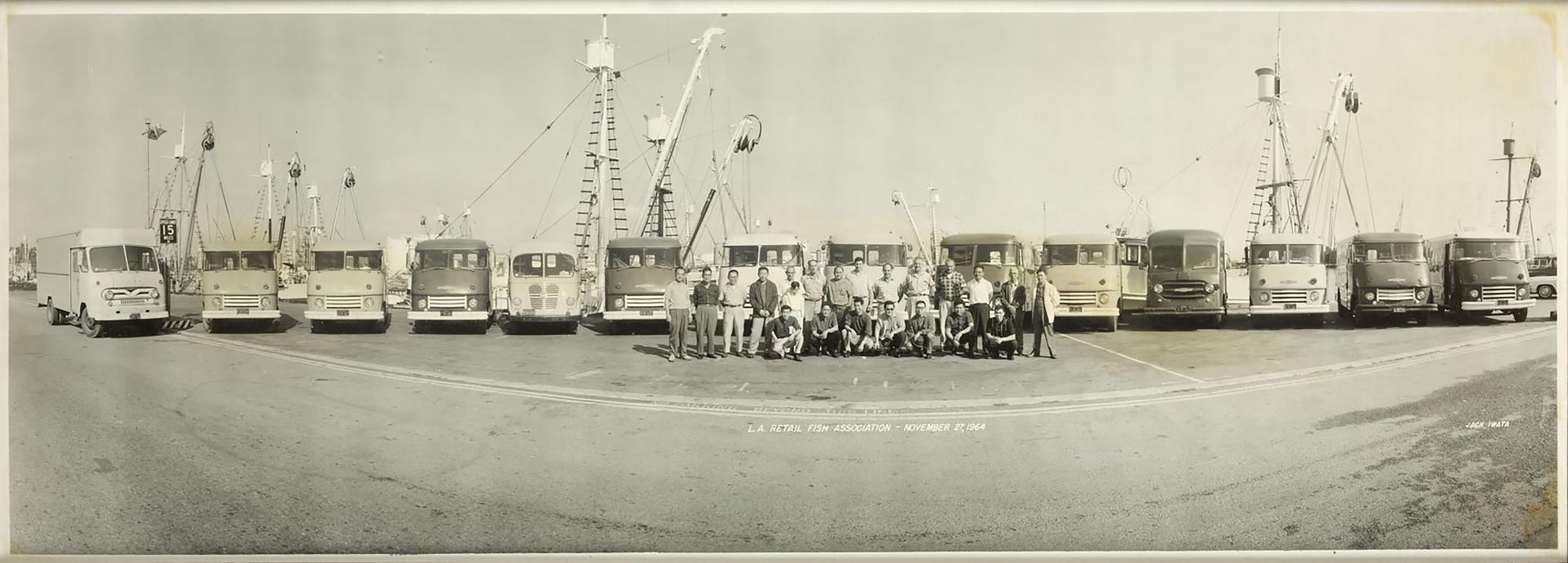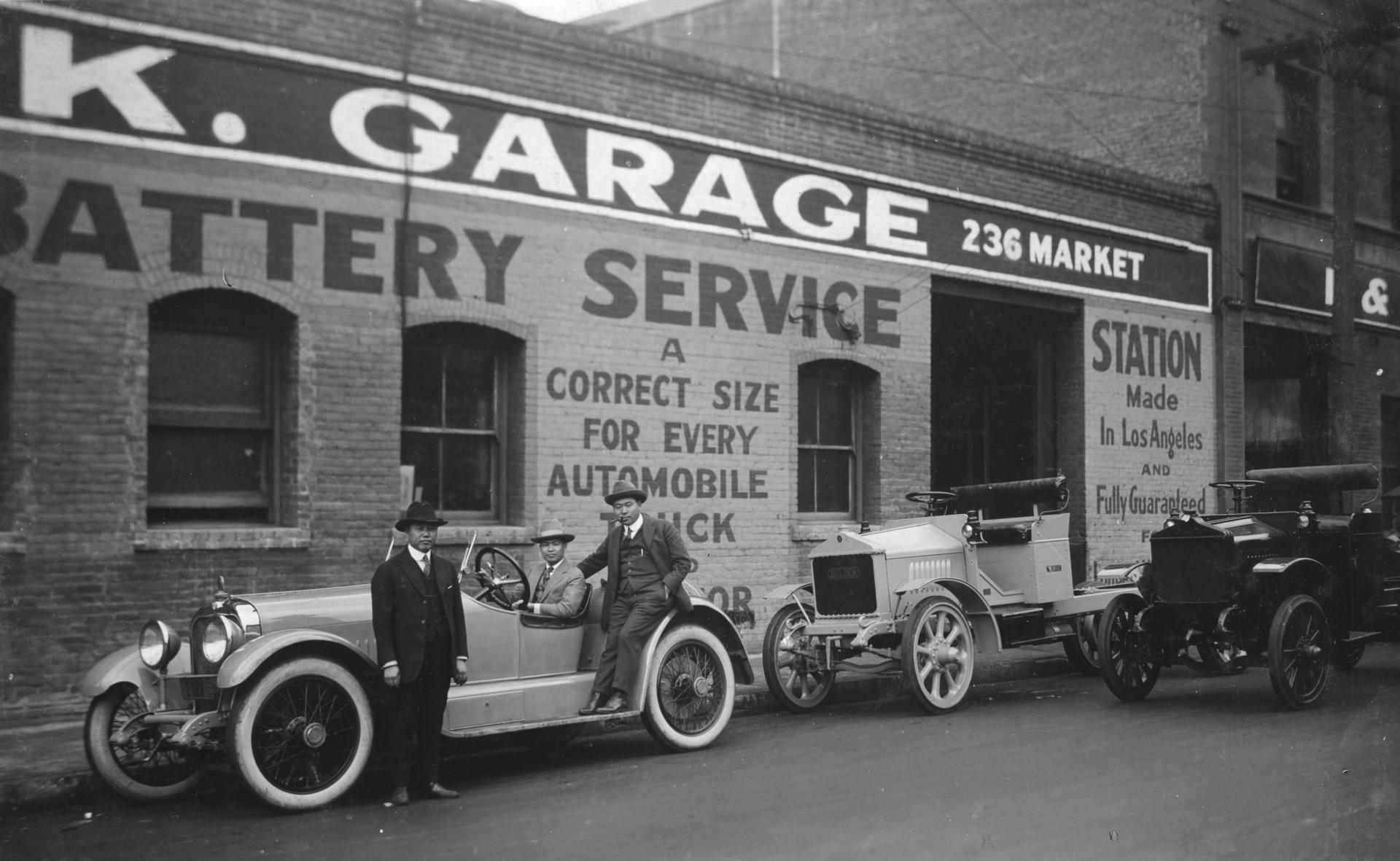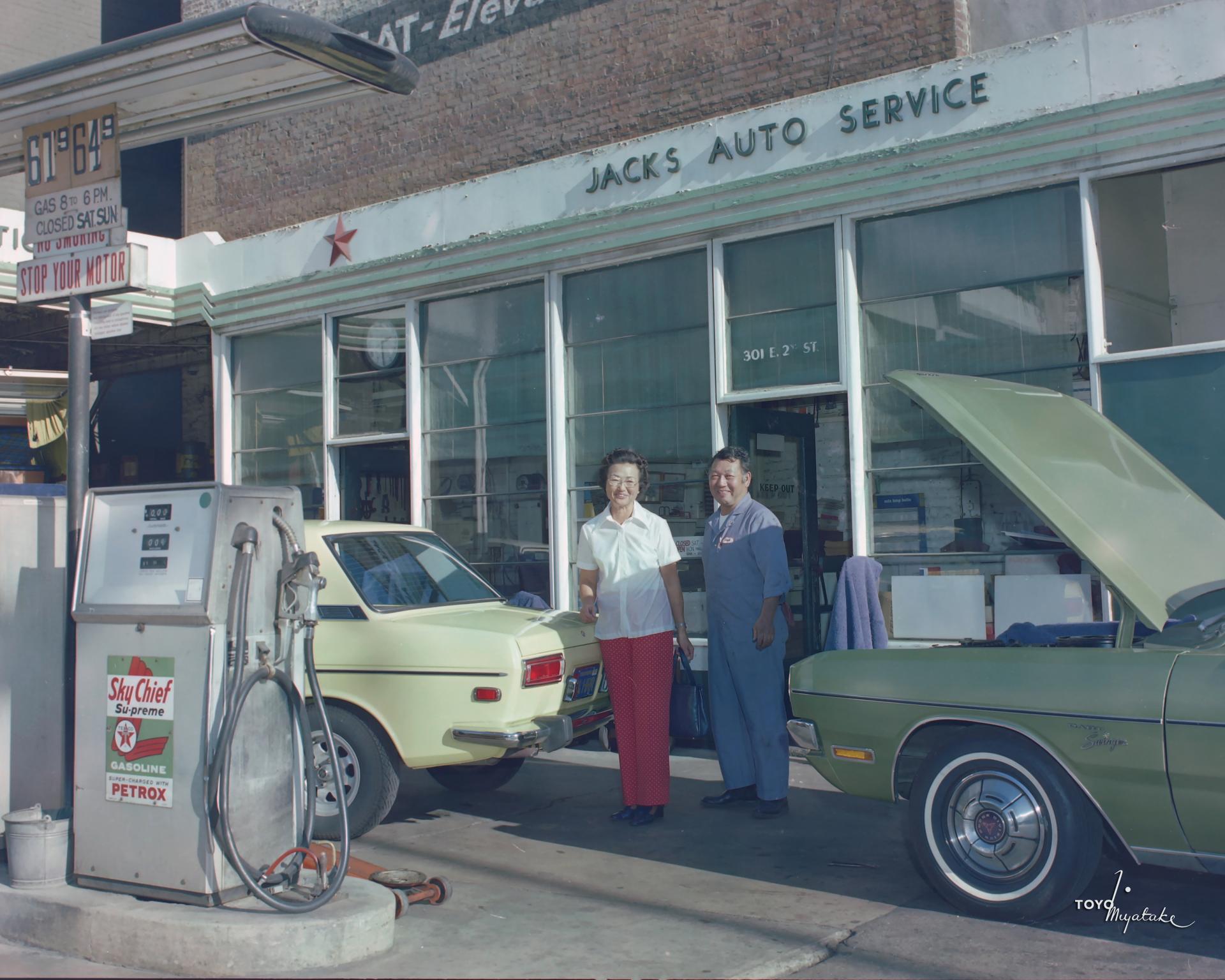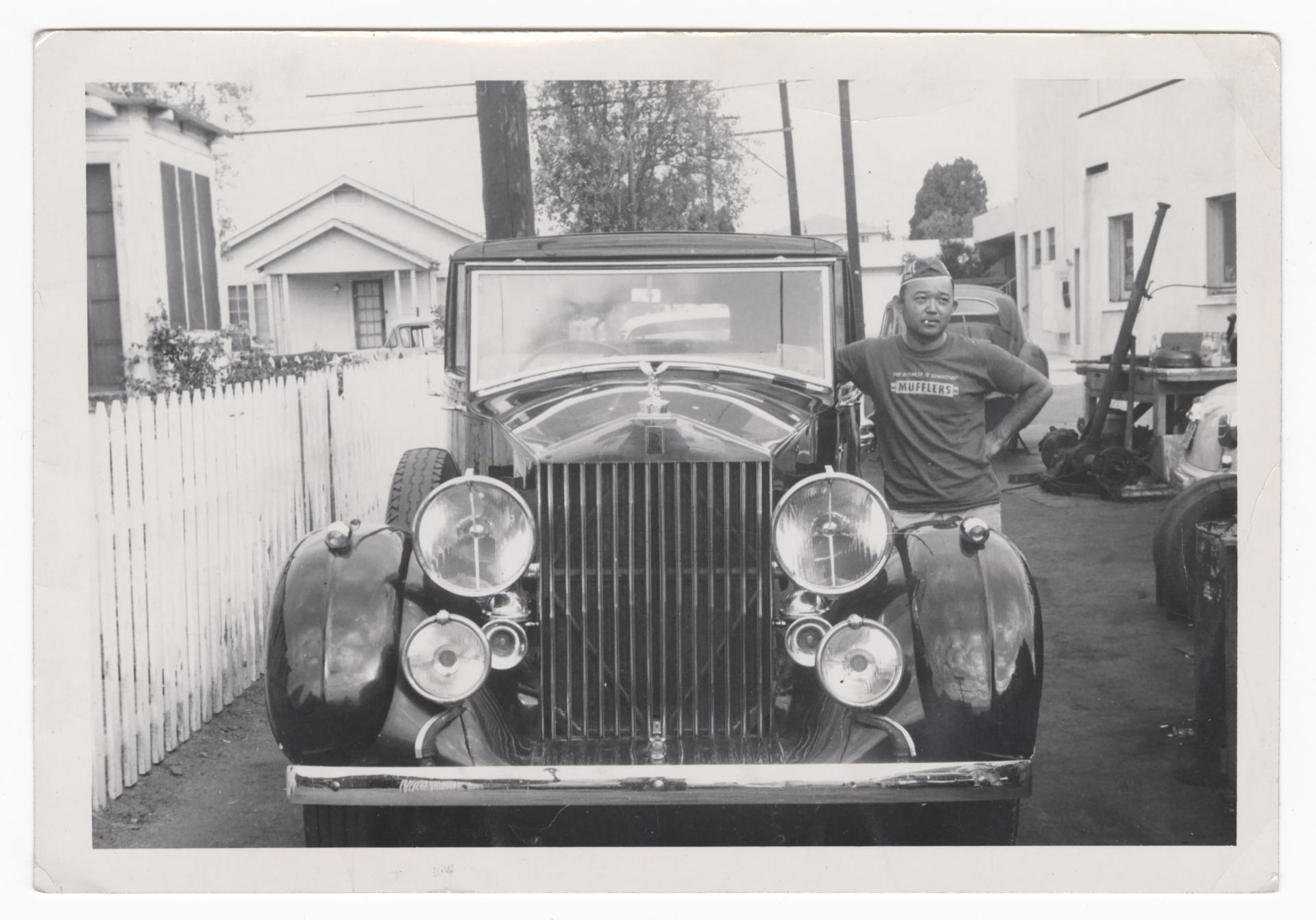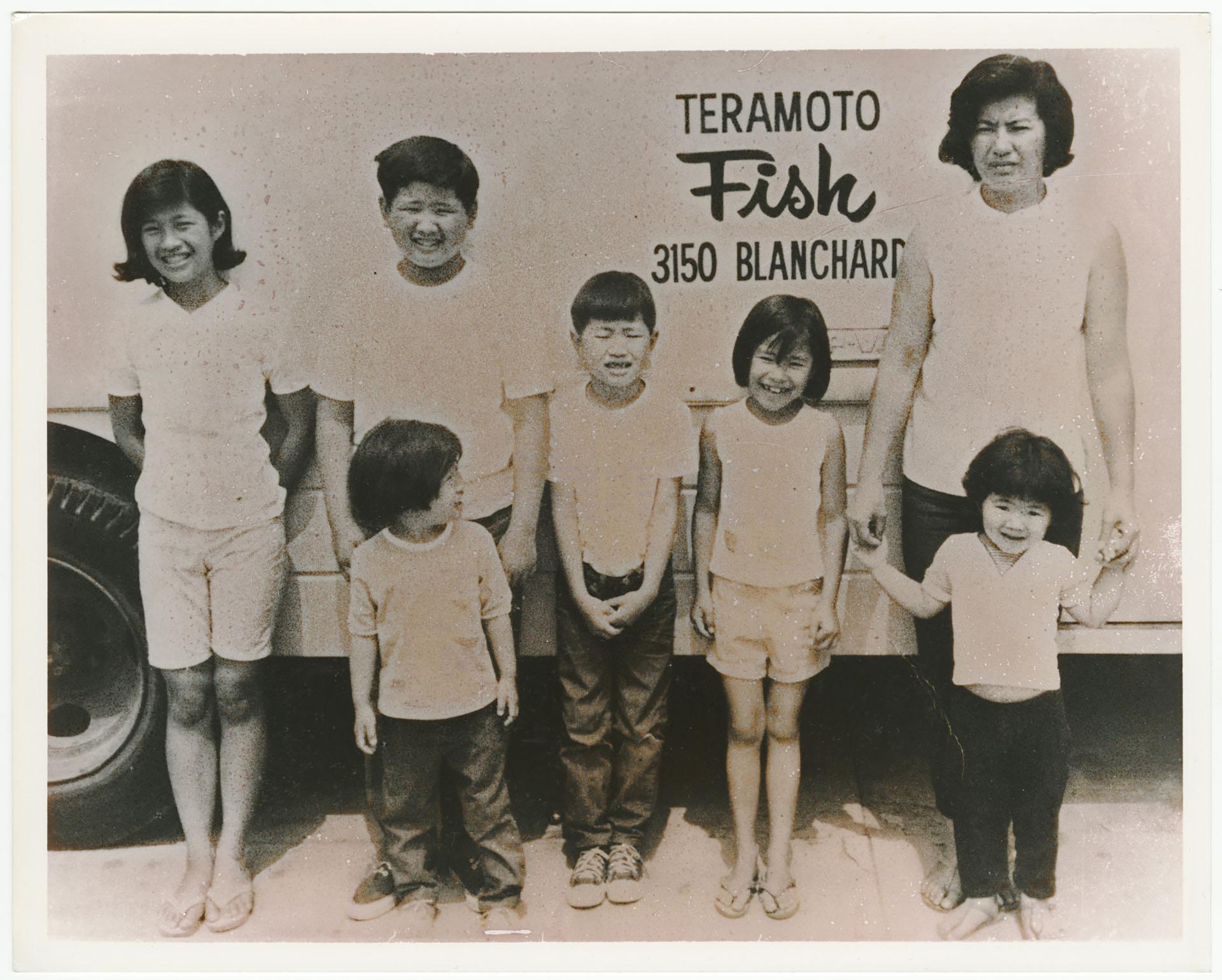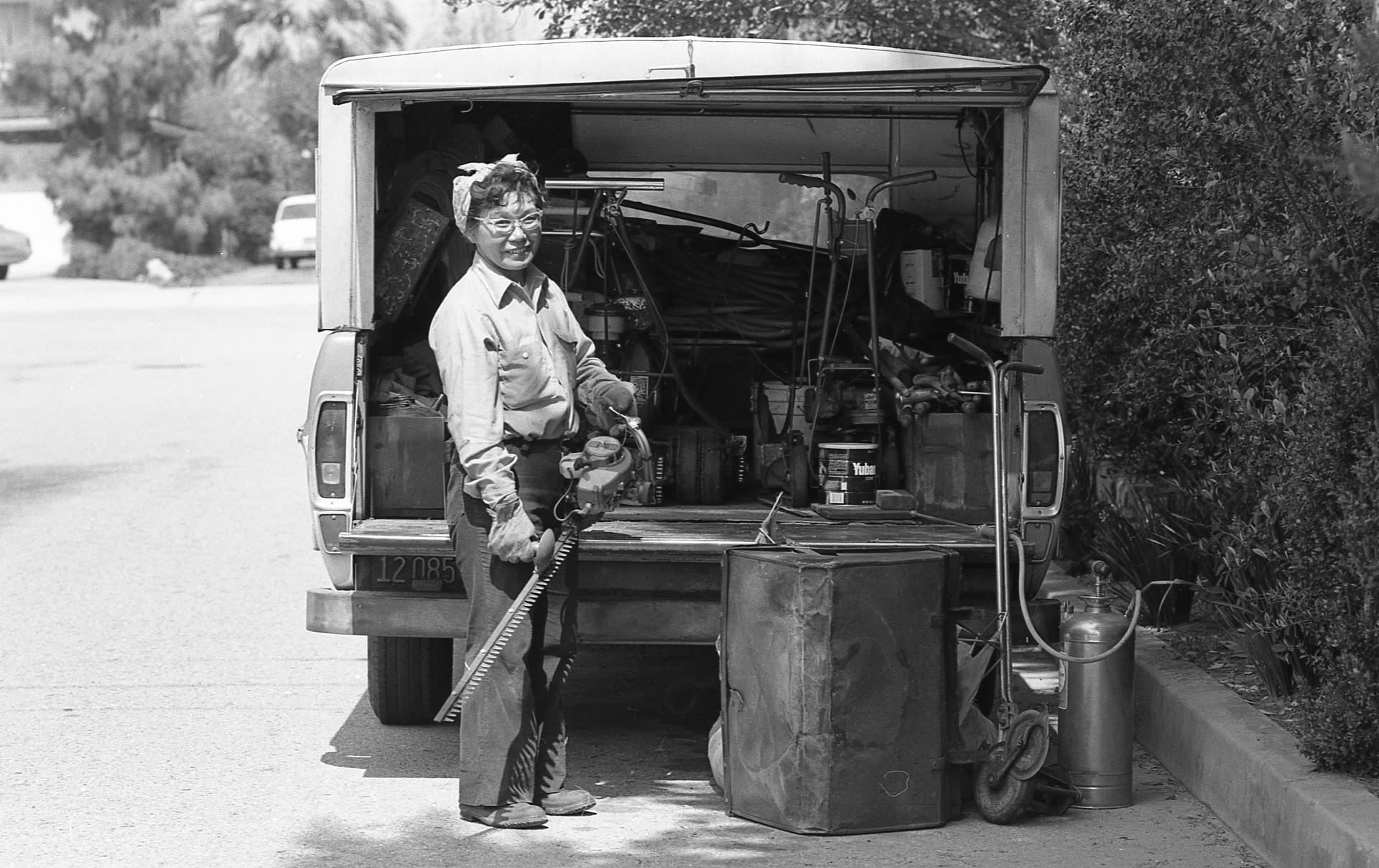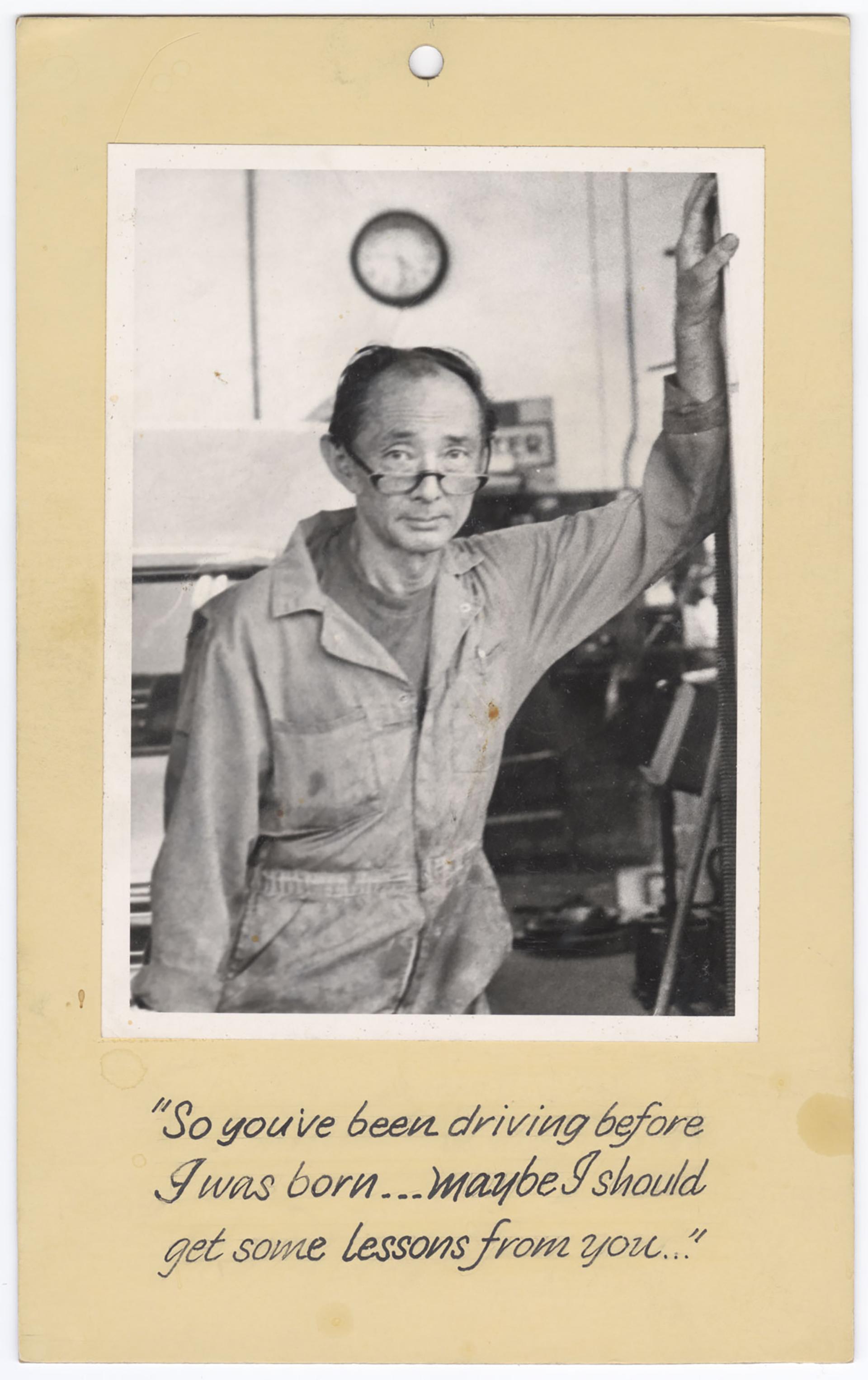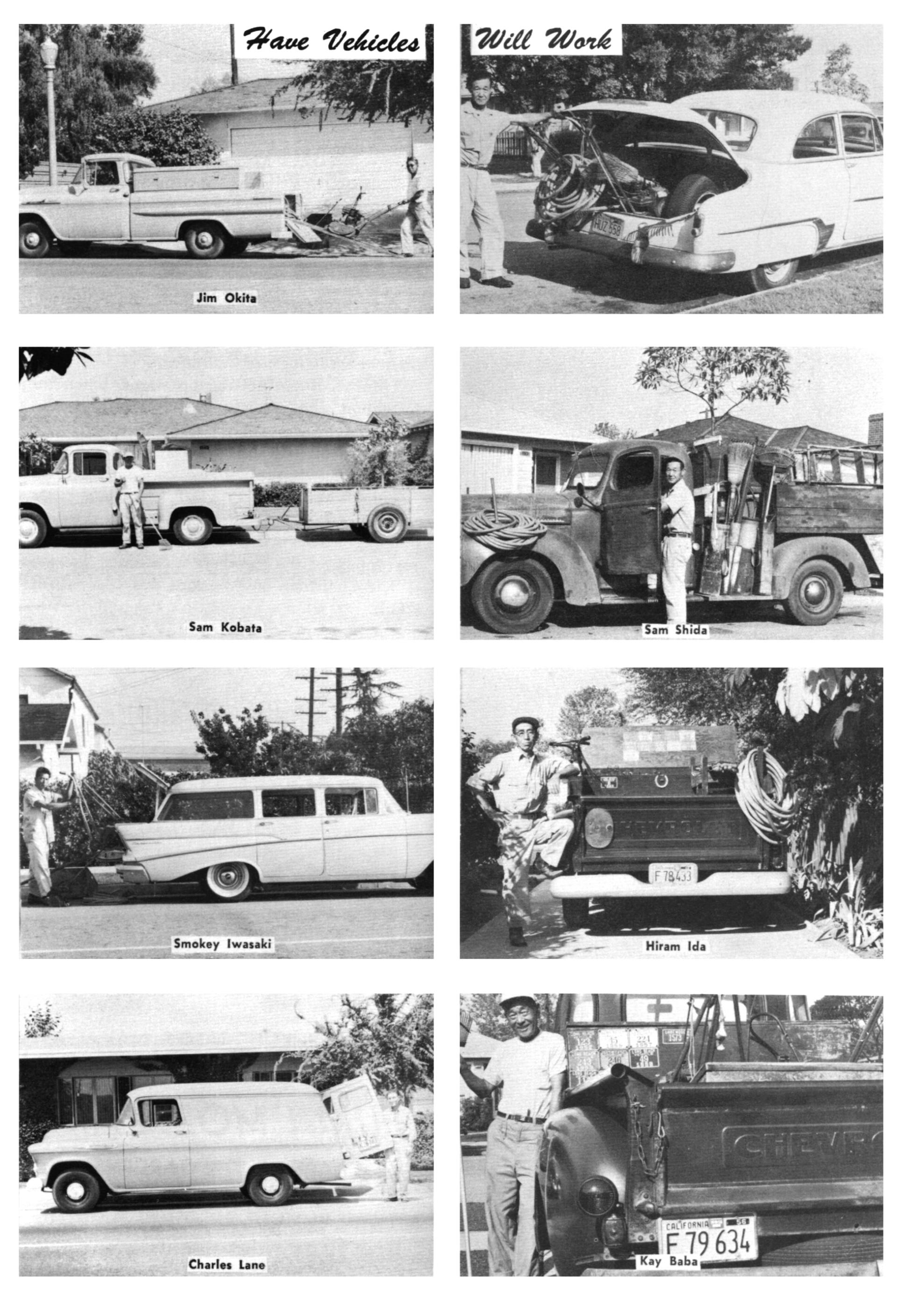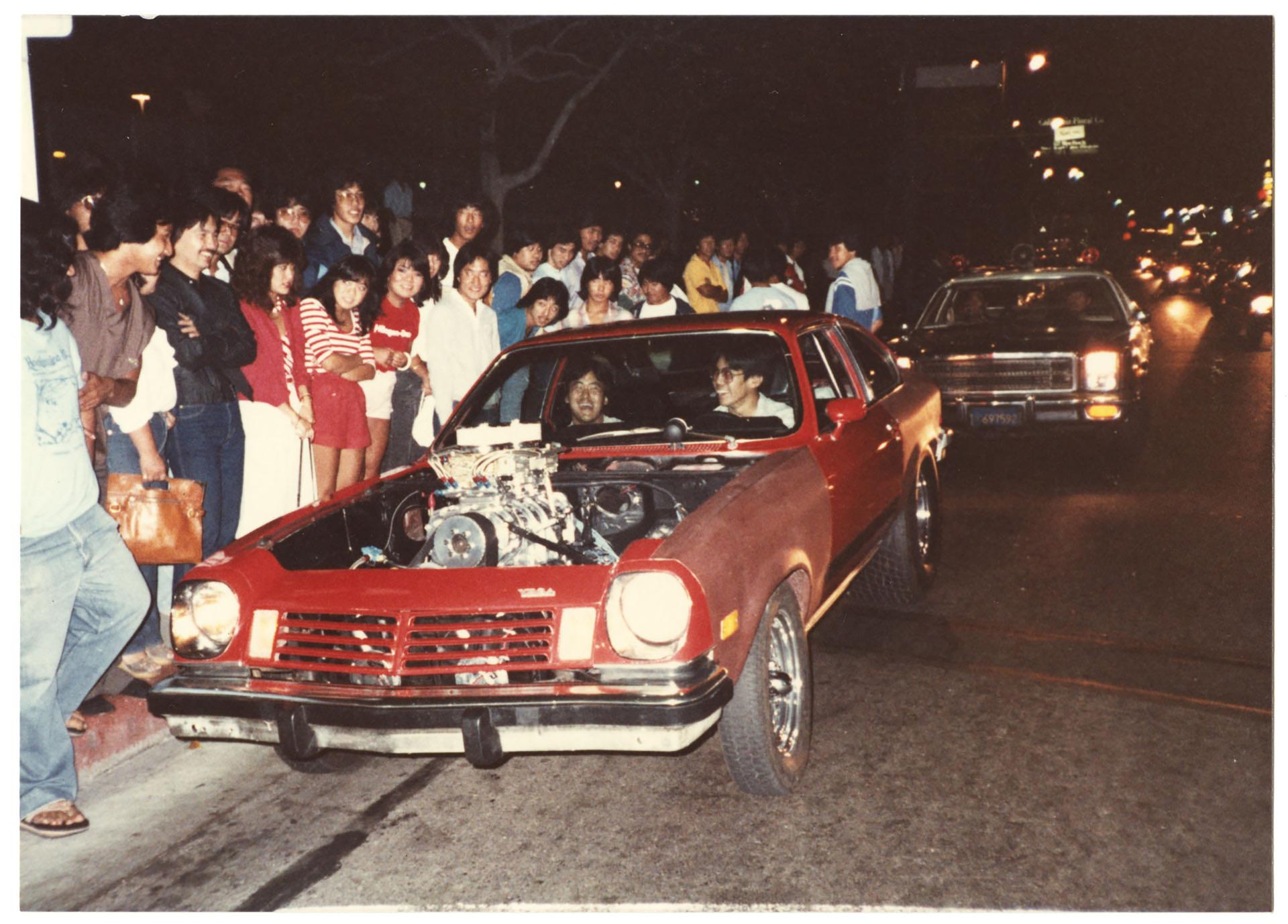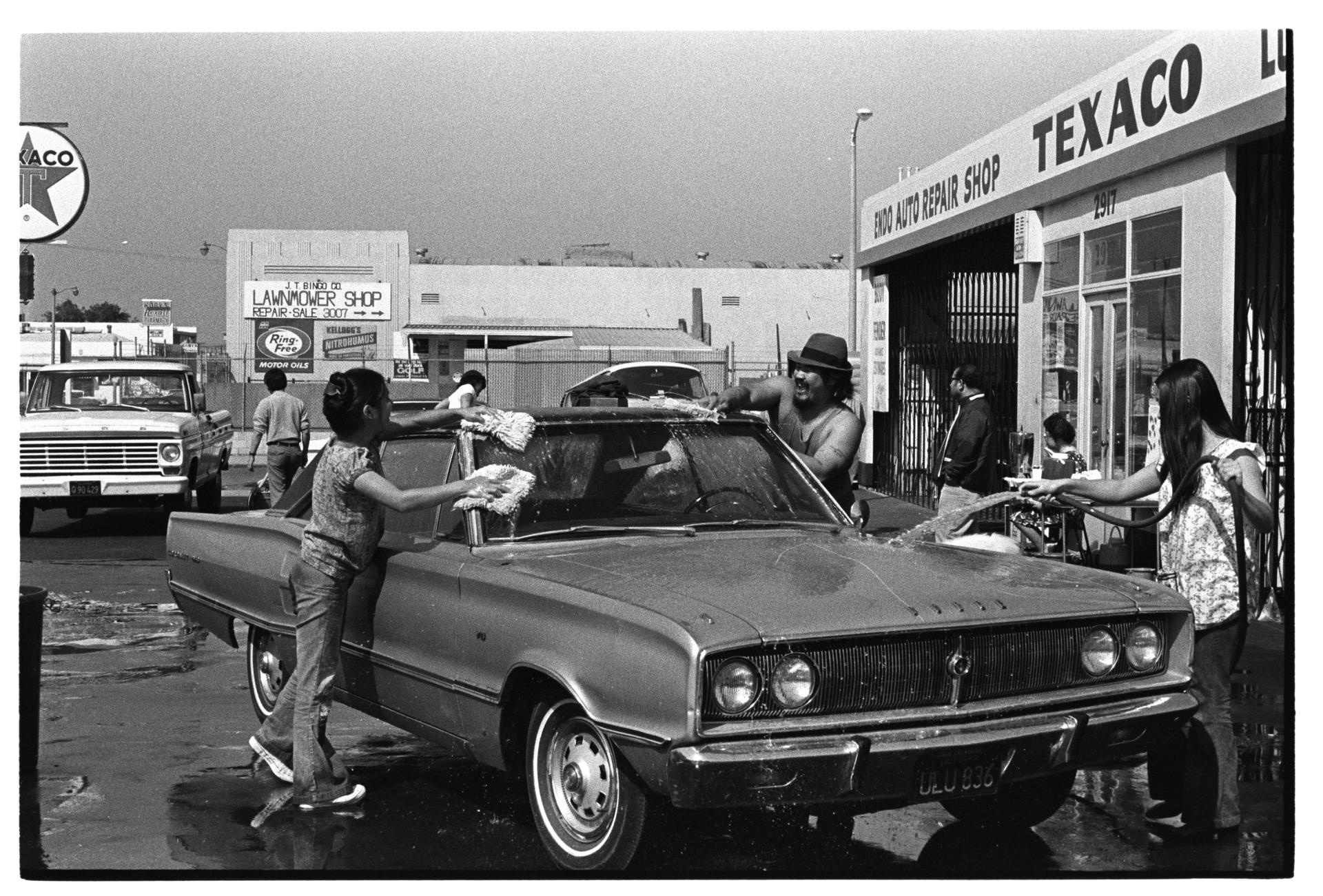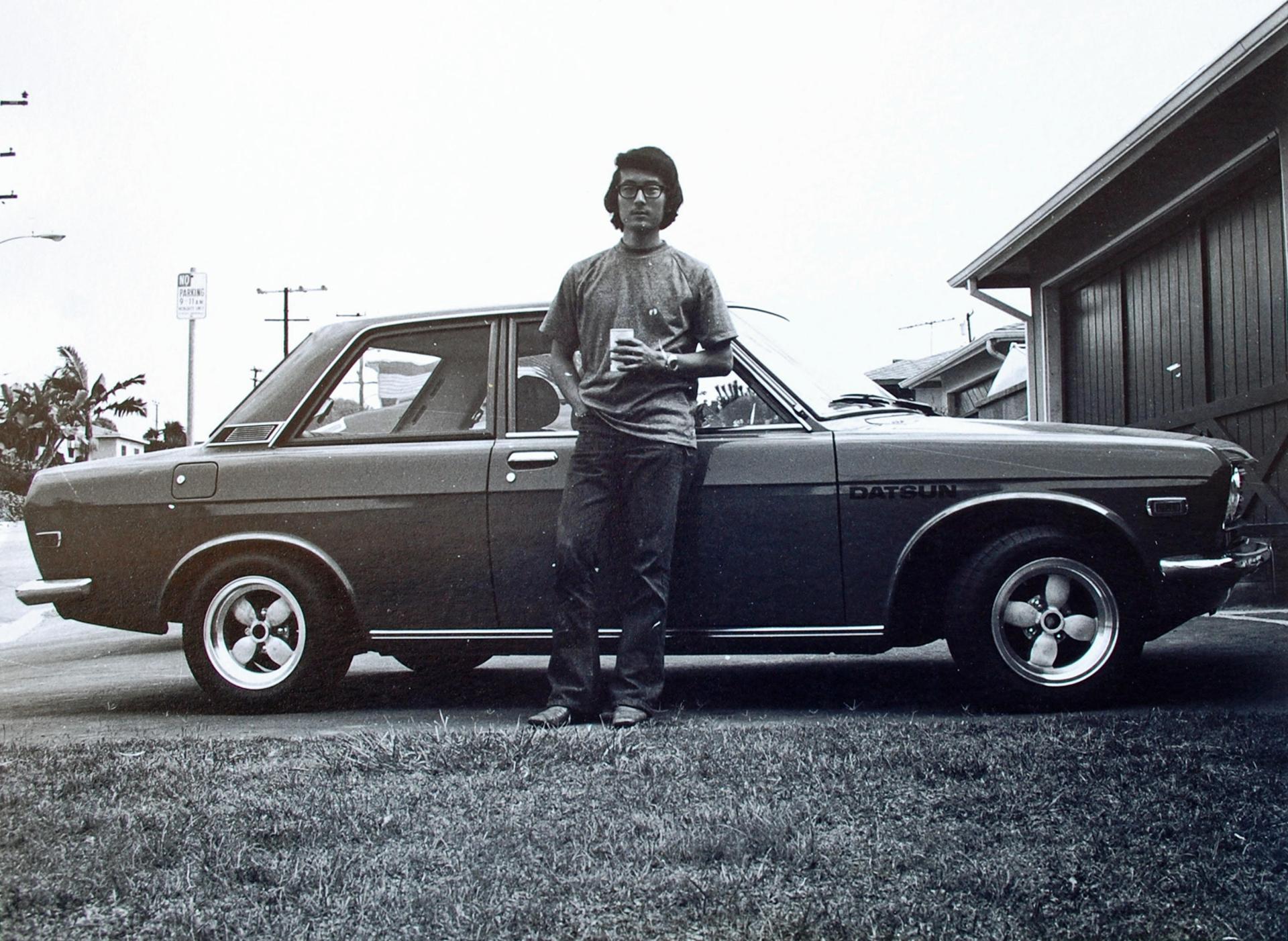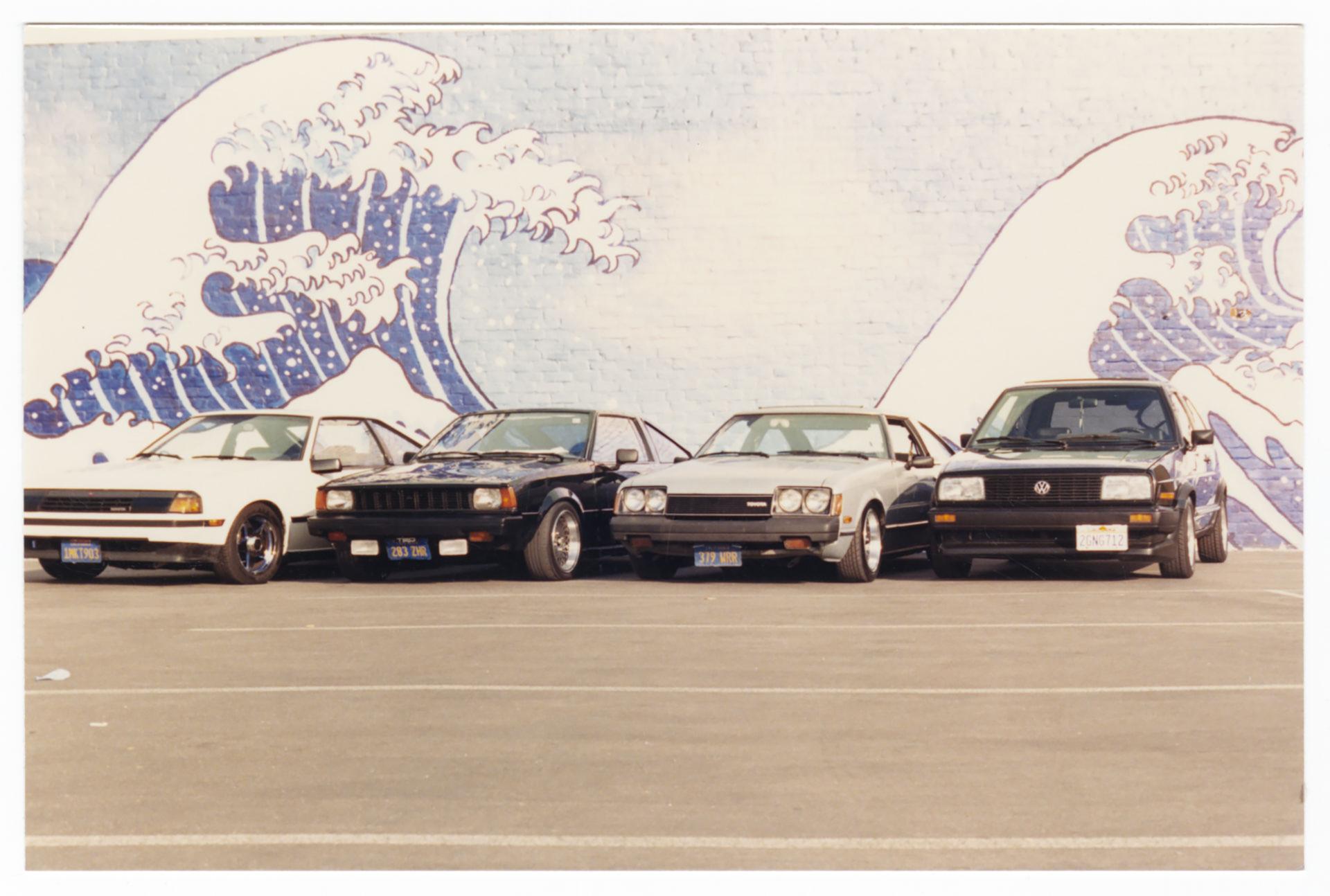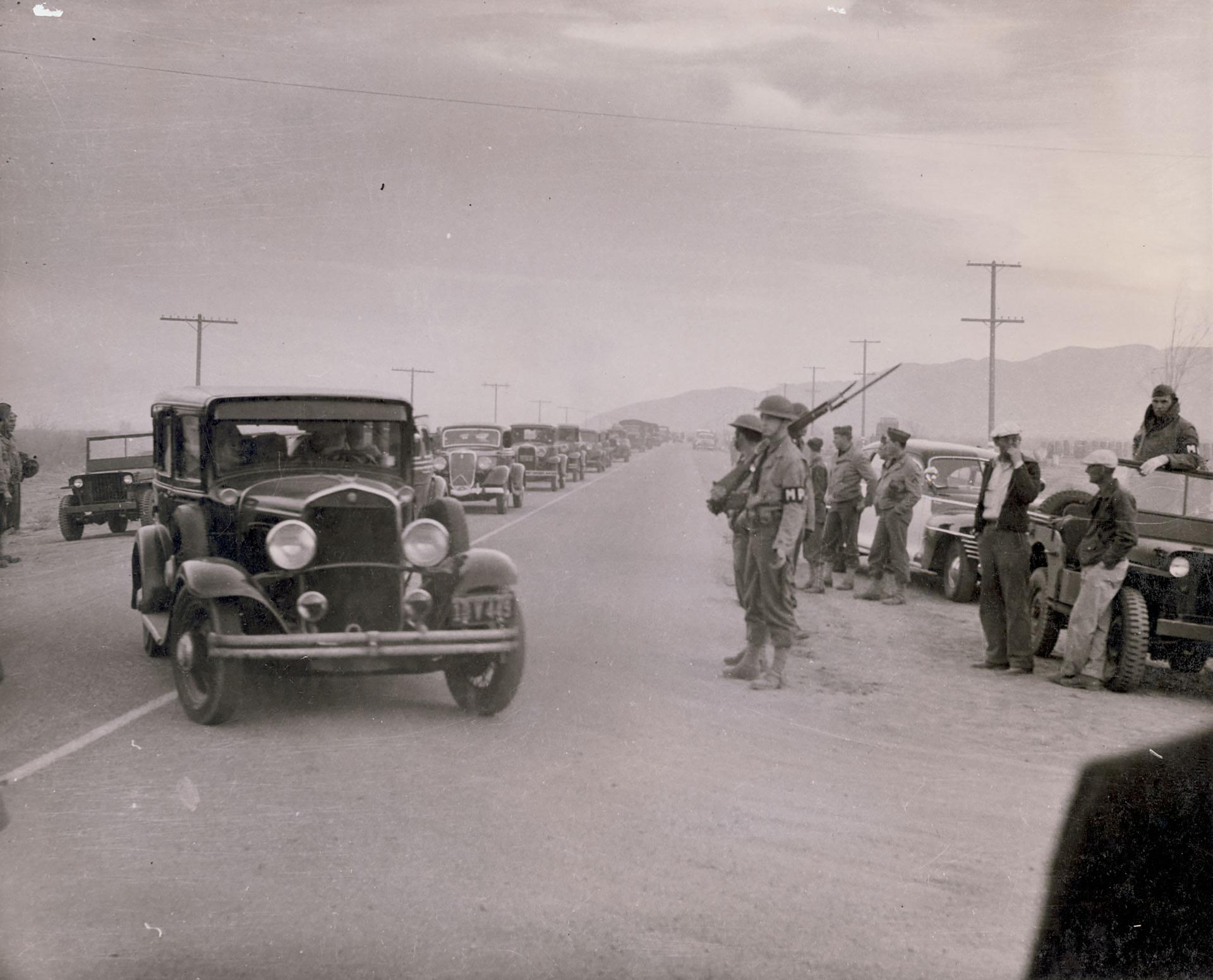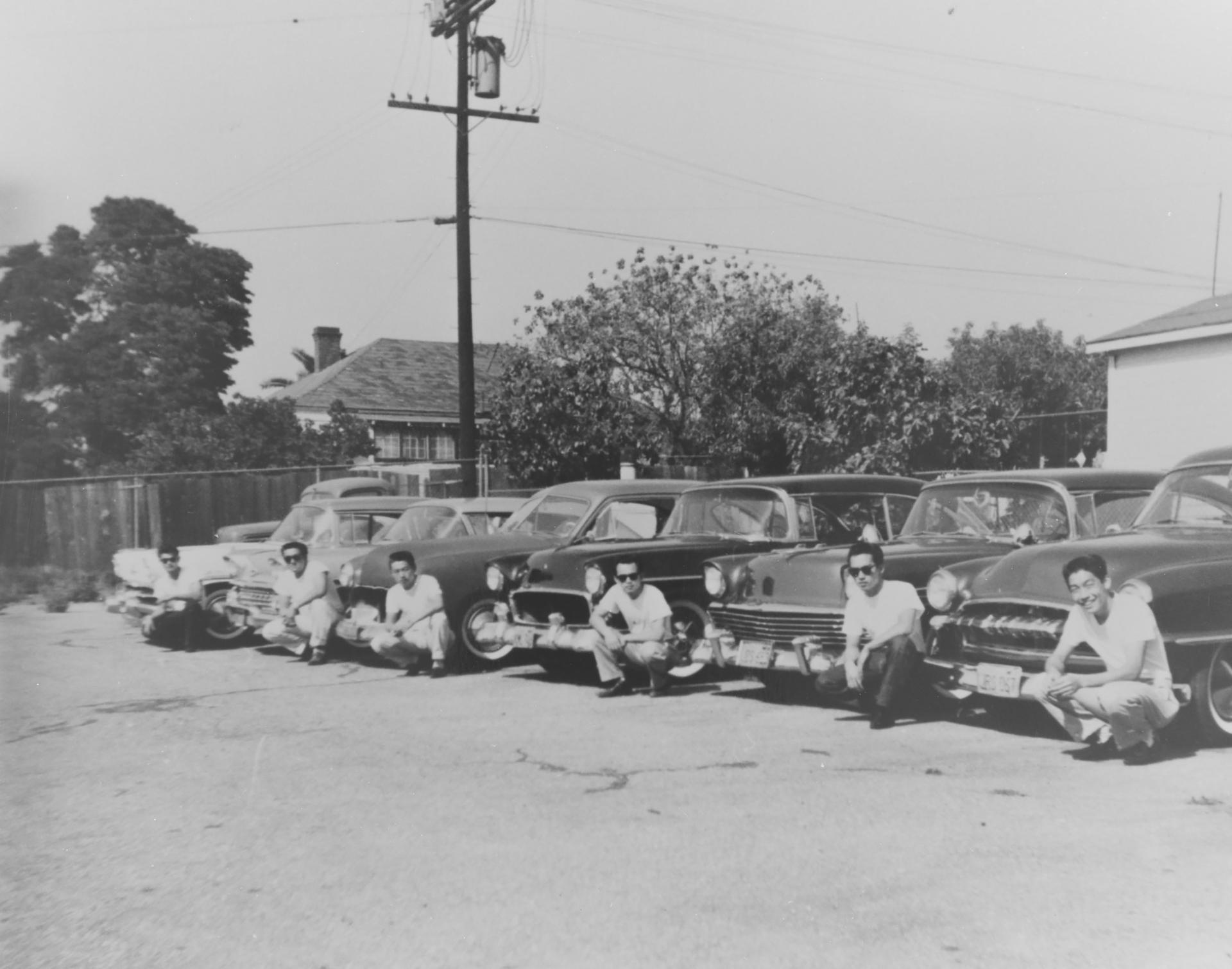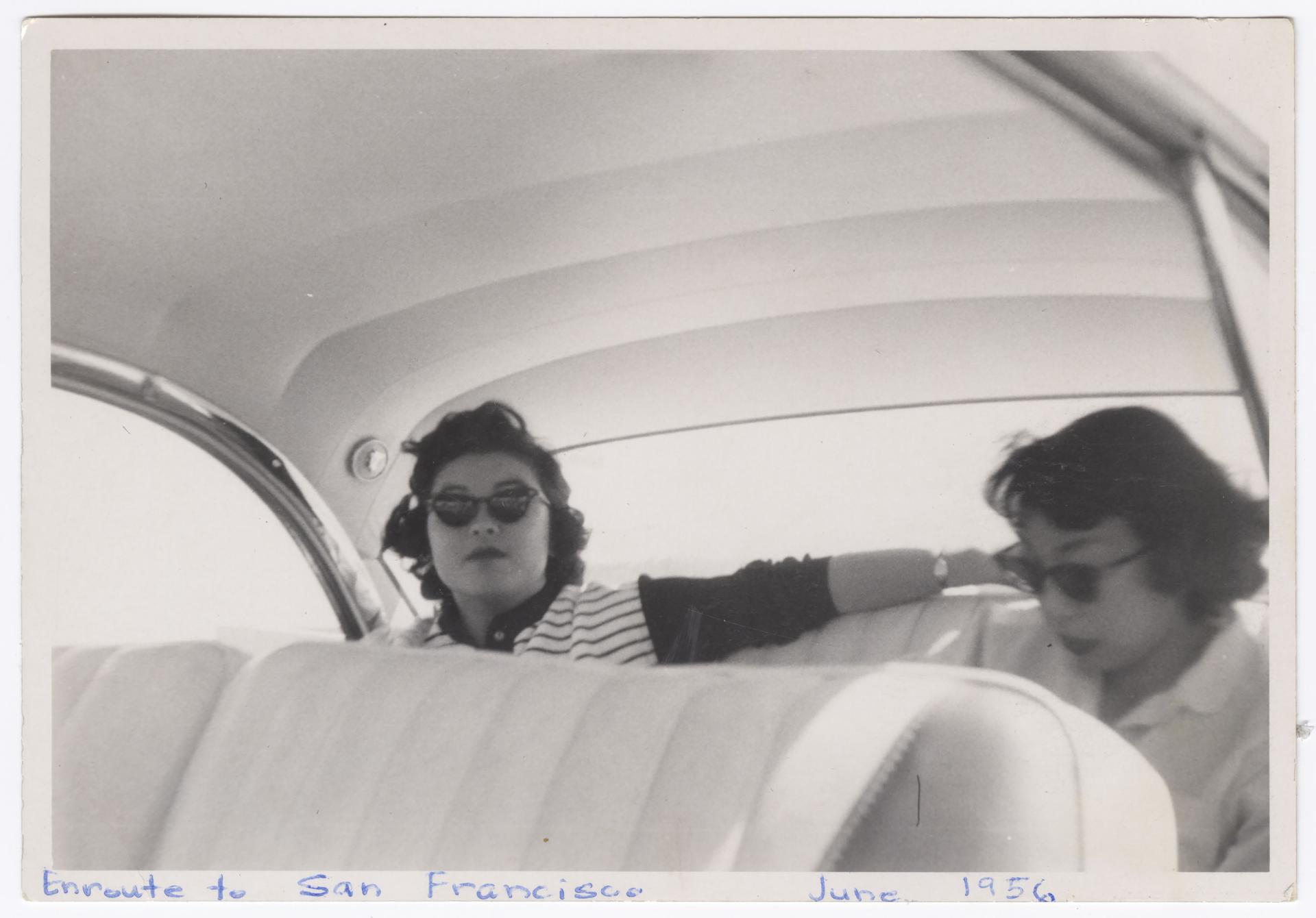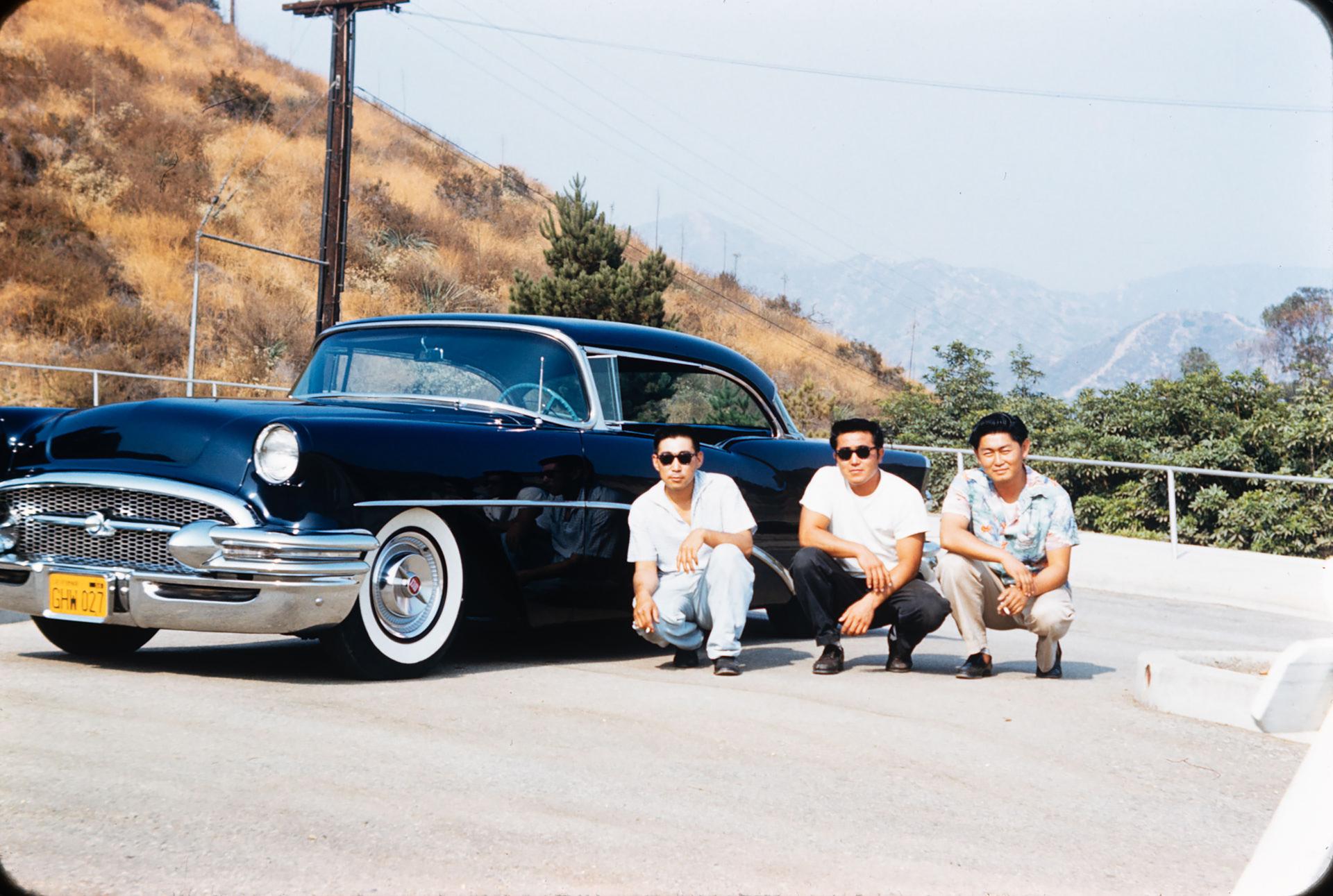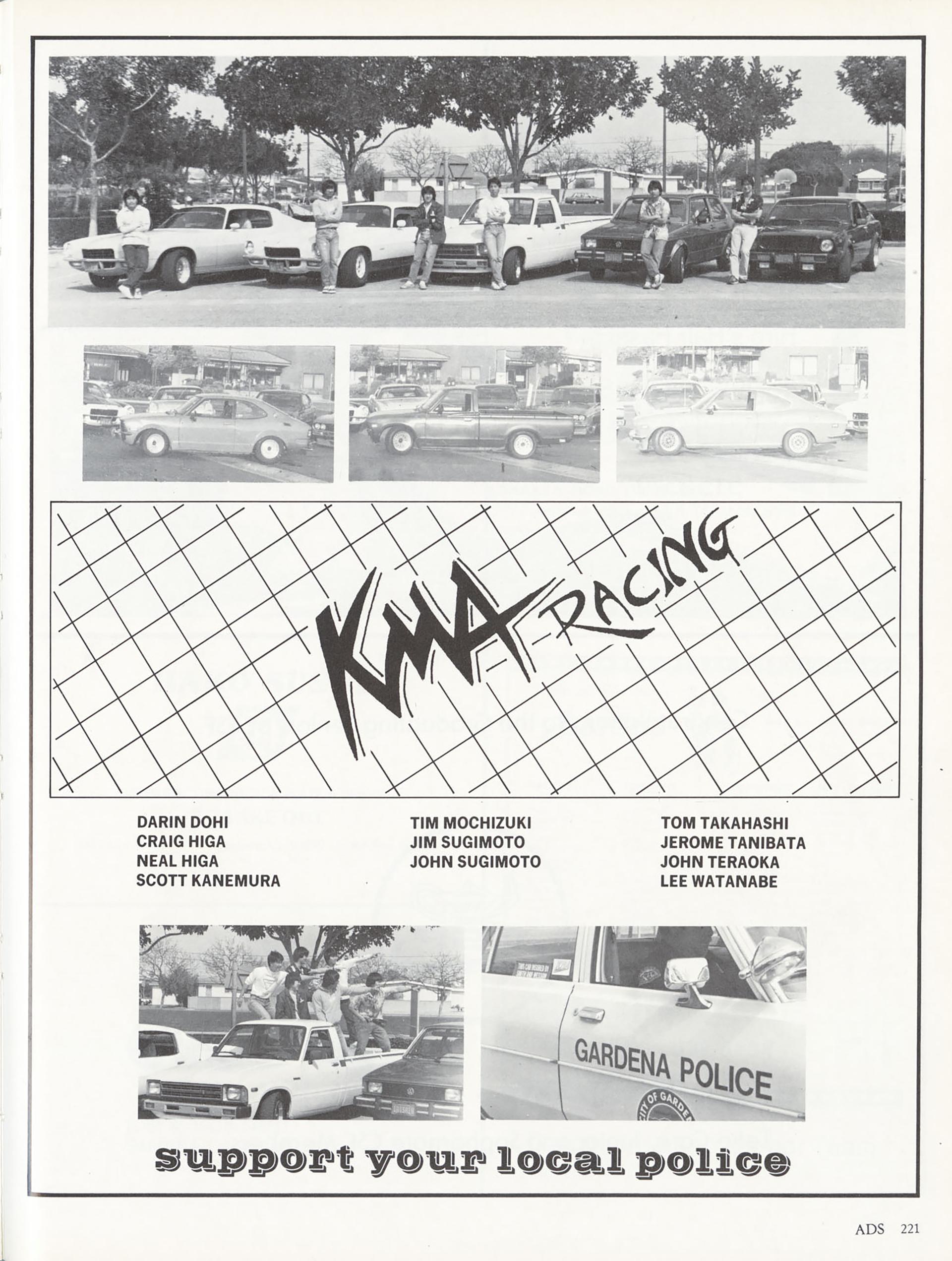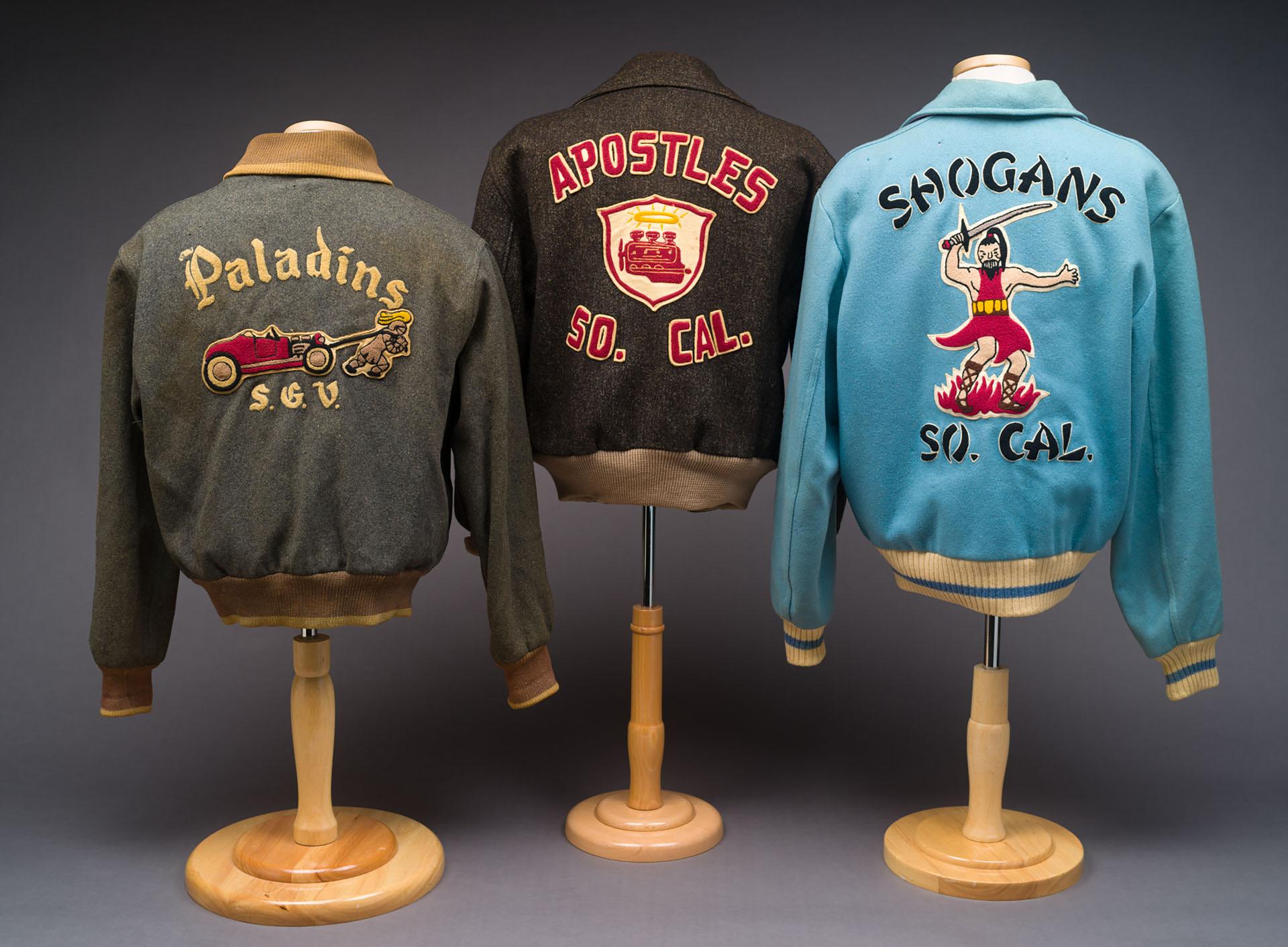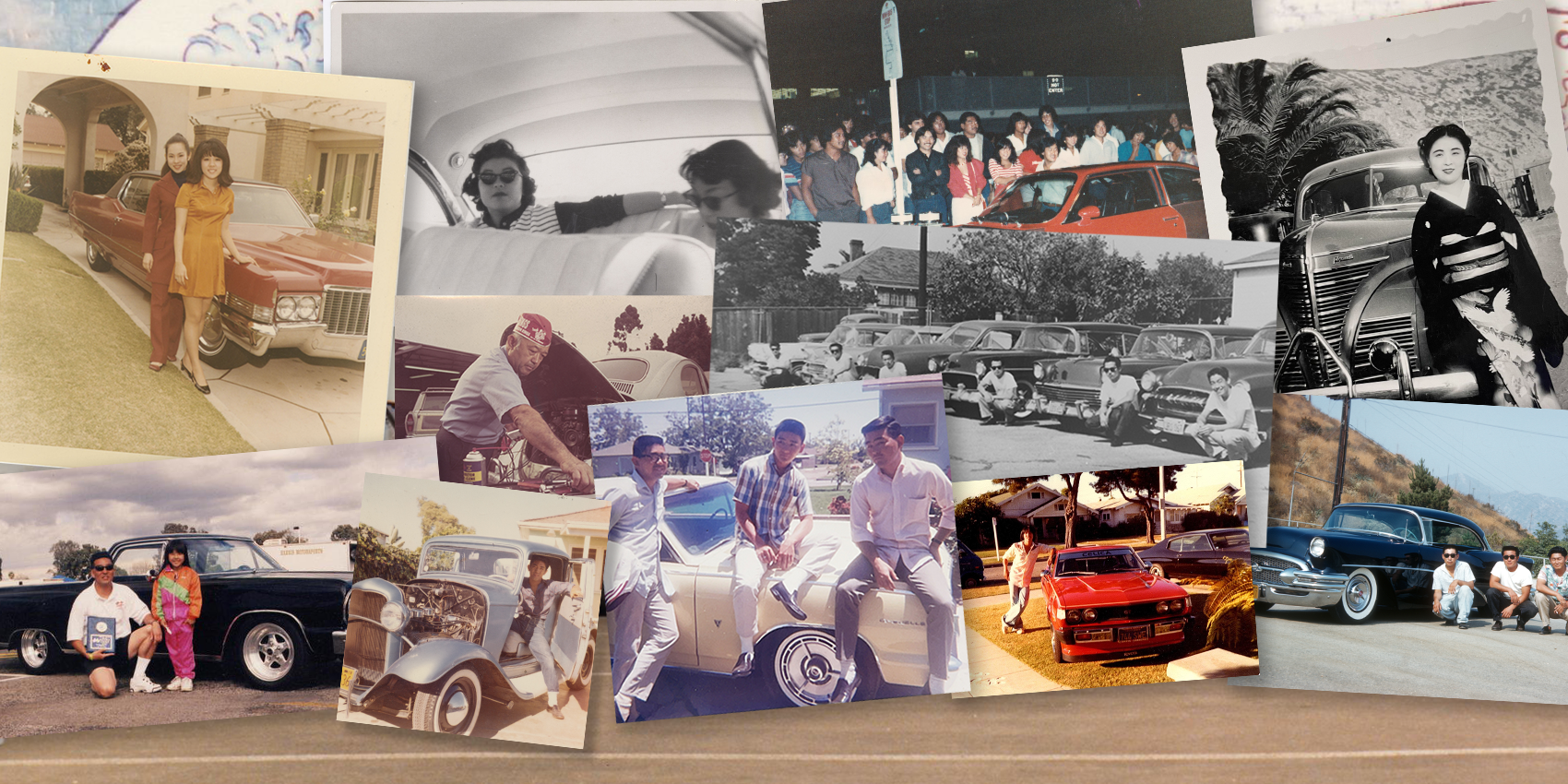
過去の展覧会
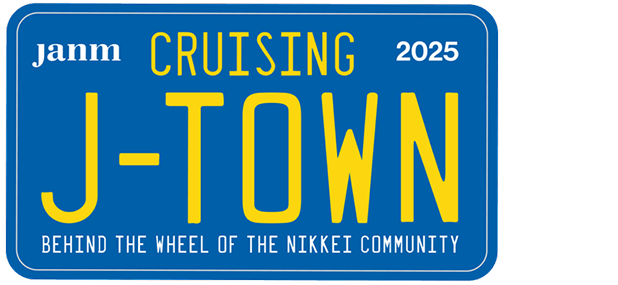
Cruising J-Town
Photos
Southern California is one of America’s original autopias—a region built from and for car and truck culture. For over one hundred years, the Nikkei (Japanese American) community has shared a profound, complicated relationship with that culture.
Whether driving fish trucks or drift racers, joining teenage car clubs or professional race teams, this community has long embraced the automobile to express creative identities, pursue economic mobility, and forge friendships and intergenerational connections. Nikkei car enthusiasts have also left their mark on car culture itself through countless contributions and innovations that have influenced how and what Angelinos drive and why.
Cruising J-Town: Behind the Wheel of the Nikkei Community explores the vast diversity of personal and social stories about how Japanese Americans have explored and transformed different Southern Californian car and truck scenes from the 1910s to now. The key themes of Speed, Style, Work, and Community takes Cruising J-Town through the Nikkei side of car culture, from gas stations to desert lakes, drag strips to concentration camps.
Photos
2025年07月31日-12月14日
Peter and Merle Mullin Gallery
ArtCenter College of Design
1111 South Arroyo Parkway
Pasadena, CA 91105
Photos
Southern California is one of America’s original autopias—a region built from and for car and truck culture. For over one hundred years, the Nikkei (Japanese American) community has shared a profound, complicated relationship with that culture.
Whether driving fish trucks or drift racers, joining teenage car clubs or professional race teams, this community has long embraced the automobile to express creative identities, pursue economic mobility, and forge friendships and intergenerational connections. Nikkei car enthusiasts have also left their mark on car culture itself through countless contributions and innovations that have influenced how and what Angelinos drive and why.
Cruising J-Town: Behind the Wheel of the Nikkei Community explores the vast diversity of personal and social stories about how Japanese Americans have explored and transformed different Southern Californian car and truck scenes from the 1910s to now. The key themes of Speed, Style, Work, and Community takes Cruising J-Town through the Nikkei side of car culture, from gas stations to desert lakes, drag strips to concentration camps.
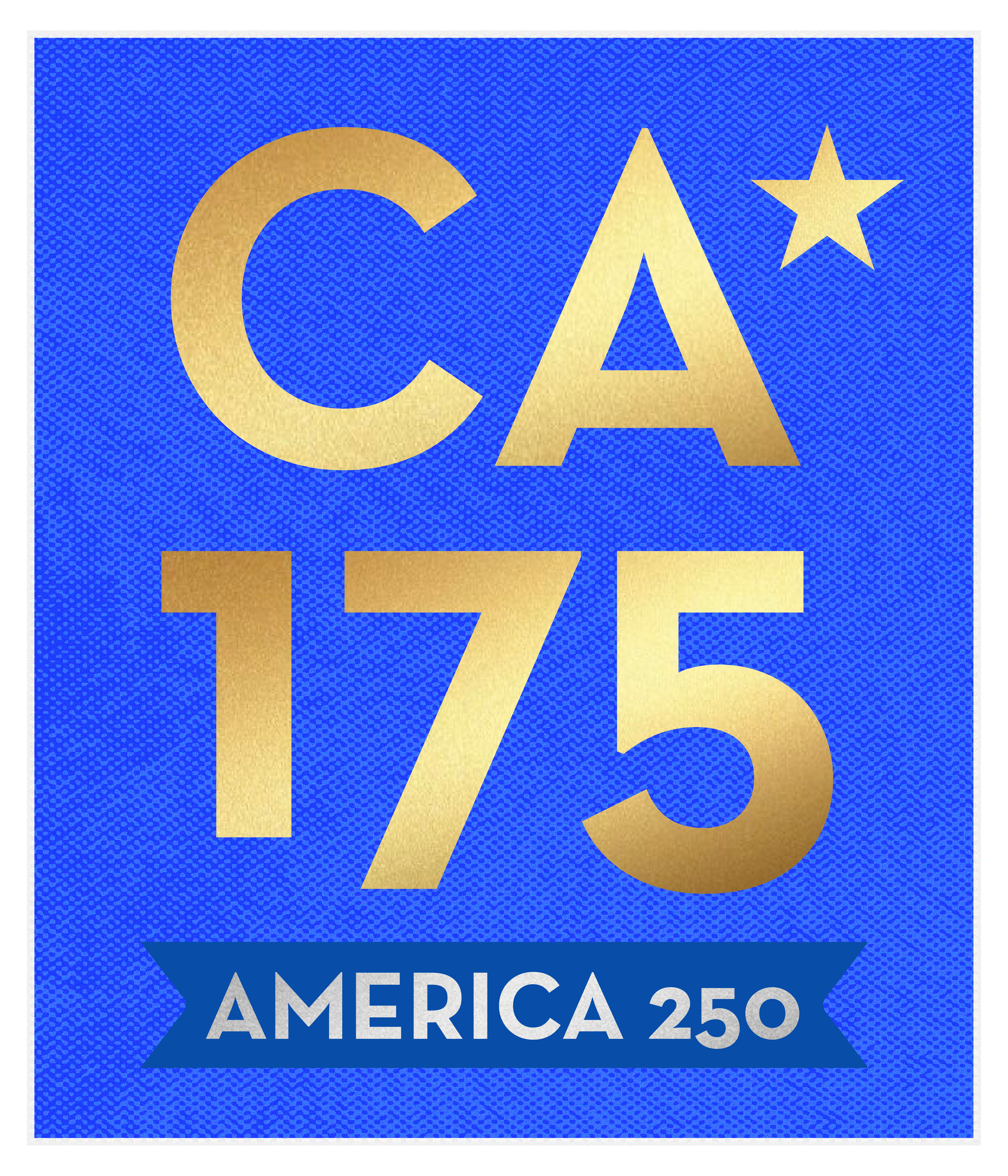
Photos
2025年07月31日-12月14日
Peter and Merle Mullin Gallery
ArtCenter College of Design
1111 South Arroyo Parkway
Pasadena, CA 91105
Photos
Southern California is one of America’s original autopias—a region built from and for car and truck culture. For over one hundred years, the Nikkei (Japanese American) community has shared a profound, complicated relationship with that culture.
Whether driving fish trucks or drift racers, joining teenage car clubs or professional race teams, this community has long embraced the automobile to express creative identities, pursue economic mobility, and forge friendships and intergenerational connections. Nikkei car enthusiasts have also left their mark on car culture itself through countless contributions and innovations that have influenced how and what Angelinos drive and why.
Cruising J-Town: Behind the Wheel of the Nikkei Community explores the vast diversity of personal and social stories about how Japanese Americans have explored and transformed different Southern Californian car and truck scenes from the 1910s to now. The key themes of Speed, Style, Work, and Community takes Cruising J-Town through the Nikkei side of car culture, from gas stations to desert lakes, drag strips to concentration camps.

SPEED
From the moment the automobile was invented, people have felt the need to test its speed. Nikkei have been fully immersed in this world whether as professional track and drag racers, amateur hot rodders, speed shop owners, and talented mechanics. Never underestimate the Nikkei who pulls up alongside you in an unassuming car; you never know what’s under the hood.
First Japanese Auto Race at Ascot Park
Drivers and organizers of the “first Japanese auto race,” held at Ascot Park, South Los Angeles, August 8, 1915. Japanese immigrant Fred Jiro Fujioka, owner of Little Tokyo’s first garage, F & K Garage, was a primary figure behind organizing the race.
Japanese American National Museum, Gift in Memory of Mr. and Mrs. Yutaka Oike by Karl K. Oike, 93.37.6
Danny Sakai at Harper Dry Lake
Danny Sakai of Los Feliz, racing at Harper dry lake in the Mojave, with a Southern California Timing Association tag marking his top speed of the day, June 30, 1940.
Photo courtesy of the Sakai Kozawa Families Collection.
The Meteor hot rod
George Nakamura and friends Dick Phippen and Carl Hoogoian, with the Meteor hot rod, Culver City, 1940. The Metor was left with Phippen when Nakamura and his family were incarcerated and decades later, Phippen returned the car to George’s son, Walter Nakamura, who eventually donated it to the Petersen Museum.
Photo courtesy of Walter Nakamura.
The Rising Sun dragster
The Rising Sun dragster in front of the “Fabulous” Forum, Inglewood, 1970. Built by the West LA drag racing team of Jimmy Ige and Michael Sassa, they acquired the nickname "Sons of the Rising Sun" after painting a red circle in the middle of the car's white parachute used for braking.
Photo by Steve Reyes.
Ernie Nagamatsu’s Roadster
Ernie Nagamatsu, a former dentist turned vintage motorsports figure, with the Spurgin/Giovanine (S-G) Roadster, El Mirage, November 20, 2017. The S-G Roadster originally broke the land speed record at El Mirage in 1948.
Photo courtesy of Randall Richardson.
The Go-Hons with their roadster
The Go-Hons with their #3 roadster, San Fernando Drag Strip, late 1950s. They were a successful drag racing club started by young men from Pacoima, most of them gardeners.
Photo courtesy of Sharon Tatsumi.
Turtles hot rod club
Club plaque and patches for The Turtles hot rod club, late 1940s to early 1950s. The Turtles, who formed in Hollywood, had the most recorded Nikkei members of any hot rod club of its era.
Photo courtesy of Kevin Kuromi.
Drag racer Sush Matsubara and crew with the Mondello-Matsubara Fiat Topolino
Crew chief Chet Husted, drivers Joe Mondello and Sush Matsubara, and Matsubara’s son Gary, with the first generation Mondello-Matsubara Fiat Topolino, mid-1960s. Matsubara was a prolific drag racer from the 1960s through mid-1970s.
Photo by Alan Earman.
The Billy Johnson Signature Ford GT500
Billy Johnson standing in front of the Billy Johnson Signature Ford GT500 racecar at Road America in Elkhart Lake, Wisconsin, 2022. The car was auctioned off to raise money for cancer research. Johnson is the nephew of former Torrance street racer-turned-Mazda engineer, Tod Kaneko.
Photo courtesy of Dan Emerson, SFNPhoto.com.
1958 quarter-midget race cars
Johnny Kuramoto, Ronnie Yamaoka, and Bryan Mizushima Jr. with their quarter-midget cars, San Fernando Valley, California, circa 1958. Quarter-midget racing preceeded go-karting and Kuramoto was the three-time national champion in the sport.
Photo courtesy of Ronald Yamaoka.
STYLE
Society’s fascination with car culture goes beyond the utilitarian value these vehicles provide as transportation. We also love how they make us feel when we look at them and are seen in them, whether sitting in a show room or gracefully careening around an asphalt track. From car customization to drift racing, vintage rim collecting to cutting-edge auto design, the Nikkei car experience wouldn’t be complete without exploring the importance of style, design, and aesthetics.
Tats Gotanda with the Buddha Buggy
Tats Gotanda with his award-winning 1959 customized Chevrolet Impala, the Buddha Buggy, 1963. Between 1960-1963, Gotanda worked with customizer Bill “The Leadslinger” Hines to turn the Buggy into a “showstopper,” and the car has been credited as a blueprint for the modern lowrider Impala.
Photo by Dick Day. Courtesy of Hearst Autos, Inc.
The Drifting Pretty drift team
Nadine Sachiko Hsu and Reiko Ige-Toshima, both members of Hsu’s Drifting Pretty drift team, appearing on the cover of The Rafu Shimpo’s holiday insert in 2006. Drifting Pretty was both a drift team and driving school, catering to encourage more women to enter the sport.
Photo courtesy of The Rafu Shimpo.
Ed Fujita with his customized “Tiny Pete”
Ed Fujita with his customized “Tiny Pete,” a half-scale version of a Peterbilt truck cab. One of his larger “mini Petes” is in the background. These are all fully functioning vehicles; the truck bed of the Tiny Pete uses hydraulics to lift and tilt. It also has a “Tonka” sticker on the back bumper.
Photo courtesy of Duane Uyeda.
Popular 1980s import car scene accessories
Popular accessories during the import car scene of the 1980s. Back left: amber lights were a simple— but illegal—modification to rear tail lights that primarily signaled to other drivers that this car had been modified. Back center: the NOS company became synonymous with producing canisters of nitrous oxide in their signature blue bottles. Nitrous oxide can massively boost an engine's power output for a few seconds but as it was seen as cheating by some racers, drivers found creative ways to hide smaller bottles of “noz” in their cars. Back right: Mikuni side carburetors were popular add-ons to help boost engine performance by injecting more air into the combustion process. Front center: Wink mirrors allowed drivers to expand their sight lines to cover blind spots on either side of the car.
Photo courtesy of Brian Karasawa—Shoreline Racing.
The “Famicom Scion”
The “Famicom Scion” was a customized 2010 Toyota Scion xb, conceived by Giant Robot’s Eric Nakamura and fabricated by Len Higa (standing on the right), appearing in JANM’s "Zen Garage" exhibition in 2010-2011. This heavily customized creation was inspired by the original Nintendo video game console in Japan and projected a screen that allowed people in the car to play games using controllers built into the car itself.
Photo courtesy of Eric Nakamura.
Bob Mochizuki working with a clay model
Toyota senior lead designer Bob Mochizuki working with a 20% scale clay model of what became Toyota’s FT-1 concept car. Calty Design Research, Newport Beach, 2013. Mochizuki is a graduate of ArtCenter's Transportation Design program.
Photo courtesy of Calty Design Research.
Drift racer Ken Gushi at Irwindale Speedway
Drift racer Ken Gushi grew up in the San Gabriel Valley and was trained by his father to drift before he was even able to get a driver’s license. In this 2019 image from Irwindale Speedway, he was driving for GReddy, the LA-based aftermarket parts company now run by Kenji Sumino, another Nikkei figure from the import car world.
Photo courtesy of Paul Mar.
Larry Shinoda in a metal car frame
Larry Shinoda in a metal car frame used as part of the design process. Shinoda, who grew up in the Hermon neighborhood near South Pasadena, attended ArtCenter for transportation in the 1950s before leaving early to work for GM where he eventually designed the iconic 1963 Corvette Sting Ray, among many other vehicles.
Japanese American National Museum, Gift of the Shinoda Family, 2003.124.46
The Hirohata Merc
Bob Hirohata’s 1951 Mercury Coupe, aka the Hirohata Merc, on the National Mall, Washington DC, 2017. The car was displayed after being added to the National Historical Vehicle Registry.
Photo courtesy of Hagerty Drivers Foundation.
The Purple Reign
Brian Omatsu’s Purple Reign is based on a 1951 Mercury Coupe, similar to the Hirohata Merc, and was originally purchased by custom car enthusiast, Yonny Koyama of Gardena, in the 1980s. After Koyama’s passing in the late 2010s, Omatsu purchased the car from the family and completed the customization based on both Koyama’s original plans and Omatsu’s sensibilities.
Photo courtesy of Brian Omatsu.
WORK
While work vehicles may have been less flashy compared to those built for speed or style, they’ve been vitally important to the survival and growth of the Nikkei community throughout the entire twentieth century. They made many forms of work possible, including farming, gardening, fish peddling, and operating gas and service stations. These vehicles may have been more humble in their aesthetics but they were no less profound in their impact on family fortunes.
Hauling tractors at the Minidoka concentration camp
Woman driver hauling tractors at Minidoka concentration camp in Idaho, August 1, 1944.
Photo courtesy of the National Archives and Records Administration and Friends of Minidoka, photo no. 210-CMB-AG1-1171
Miyamura Trucking Company
Miyamura Trucking Company, Los Angeles, early 1950s. Started by Frank and Kikuye Miyamura, the company primarily helped ship produce from Nikkei farms to city markets.
Photo courtesy of Joyce A. Hernandez.
LA Retail Fish Association
Members of the LA Retail Fish Association (LARFA) at San Pedro Wharf, November 24, 1964. Fish truck drivers delivered fresh seafood and other Japanese food goods to households across the Southland, six days a week, from the late 1940s through early 1990s. LARFA helped drivers organize their routes to avoid accidental competition with other drivers and could also negotiate for better wholesale prices. This panoramic photo was shot by Jack Iwata.
Photo by Jack Iwata courtesy of Clyde Iwata and Teruo “Ted/Snyder” Endo Family.
F & K Garage
Fred Jiro Fujioka (seated) and employees of F & K Garage, Little Tokyo, 1910s. During this era, the garage was at 236 Market Street, just north of present-day Temple Street, between Los Angeles and Alameda streets.
Photo courtesy of Seaver Center for Western History Research, Los Angeles County Museum of Natural History.
Jack’s Auto Service, Little Tokyo
Minnie and Jack Kuramoto at Jack’s Auto Service at 2nd and San Pedro in Little Tokyo, 1970s. Kuramoto opened the garage before World War II and an employee kept it running during the war while the family was incarcerated, allowing him to resume operation once the family returned to LA. This photo was taken by Kuramoto’s Little Tokyo neighbor, Toyo Miyatake.
Photo by Toyo Miyatake Studio.
Tom Ikkanda, was a prewar hot rod mechanic
Tom Ikkanda was a prewar hot rod mechanic who opened and operated a much loved garage off Sawtelle Boulevard in West LA for decades after World War II.
Photo courtesy of Richard Ikkanda.
Shiro “Gunga” Teramoto’s family in front of Teramoto fish truck
Shiro “Gunga” Teramoto’s family in front of Teramoto fish truck, Los Angeles, 1968. Left to right: Mary, Lois, Dave, Karen, Gary, Elaine, and Julie Teramoto.
Photo courtesy of Lois Yamada.
Gardener Annie Tanaka
Gardener Annie Tanaka loading up her truck, Los Angeles, California, May 1976.
Photo by Dennis Kuba, Visual Communications Photographic Archive.
H.T. “Horse” Takakuma
H.T. “Horse” Takakuma at the gas station he helped run, Harry’s Texaco, Gardena, 1970s.
Photo courtesy of Takakuma Family.
Long Beach Landscape Gardeners Association brochure
“For a Greener Tomorrow” brochure from the Long Beach Landscape Gardeners’ Association, 1958. The association was one of several formed by Nikkei gardeners to help advocate for people in the trade.
Photo courtesy of Naomi Hirahara from Green Makers: Japanese American Gardeners in Southern California.
COMMUNITY
At the core of Cruising J-Town are the countless ways in which car culture influenced the shape and trajectory of the Nikkei community in Southern California. Whether joining car clubs, taking road trips together, or polishing their rides to cruise summer festivals, Japanese Americans have built friendships and sustained family relationships through their vehicles. This was as true over one hundred years ago, as it was in the dark years of World War II incarceration, as it has been for those who have come of age in Los Angeles in the decades since. There are car communities and there are communities forged through cars and the Nikkei have profound experiences with both.
Glen Kuwata’s Chevrolet Vega
Street racers Tod Kaneko and David Eguchi, inside of Glen Kuwata’s Chevrolet Vega, during the 1982 Nisei Week cruise, Little Tokyo. The Cruise began as early as the 1970s and by the 1980s, was the single biggest Nikkei car event of the year, with hundreds of vehicles cruising around the Nisei Week carnival grounds while thousands of spectators watched from the sidewalks.
Photo courtesy of Tod Kaneko.
Car wash fundraiser at Endo Auto Repair Shop
Car wash fundraiser at Endo Auto Repair Shop near the Crenshaw District, 1972. The Crenshaw was a key Nikkei neighborhood for car culture in the 1970s.
Photo by Robert A. Nakamura, Visual Communications Photographic Archive.
Doug Endo with his Datsun 510
The late Doug Endo with his Datsun 510, Gardena, early 1970s. Endo was amongst the first to lower and modify a Datsun 510 and that sports sedan was at the forefront for launching the import car scene.
Photo courtesy of Doug Endo.
Cars at Fukui Mortuary
From left to right: Kyle Kobayashi’s Toyota Celica, Bob Nishida’s Toyota Corolla, Rodger Fujimoto’s Celica, and Ron De Torres’s Volkswagen Jetta. Fukui Mortuary, Little Tokyo, 1987. While Fukui Mortuary is still there, the mural has since been painted over.
Photo courtesy of Bob Nishida.
Manzanar caravan
Five hundred incarceees, belonging to a massive caravan that departed from Pasadena’s Rose Bowl, arrive at Manzanar, March 23, 1942. Upon arrival, people had their cars searched, impounded, and later liquidated by the government.
Photo by Jack Iwata.
Japanese American National Museum, Gift of Jack and Peggy Iwata, 93.102.190
The Mikados car club
The Mikados car club formed in Boyle Heights in the late 1950s and was active throughout the 1960s. This photo was taken in front of the Fellowship House aka Evergreen Hostel in Boyle Heights, a space that housed many returning Nikkei after the war.
Photo courtesy of Richard Sugi.
The Atomettes
The Atomettes’s Karlene Koketsu and Sadie Hifumi sitting in the backseat of Susan Uemura’s Bel Air, en route to San Francisco,1956. The Atomettes formed in the Sawtelle neighborhood by girls at West LA United Methodist Church and they took frequent road trips together across California and Nevada.
Japanese American National Museum, Gift of the Atomettes 2023.48.9
The Jr. Dekoiyos car club
Members of the Jr. Dekoiyos car club, San Fernando Valley, late 1950s. Left to right: Tad Hirai, Jim Kono, and Willie Morita. The car is a 1955 Buick Century, likely customized by Hirai at Valley Custom in Burbank.
Photo courtesy of Bob Mochizuki.
KMA racing
Ad purchased by the KMA racing club in the 1985 Gardena High School yearbook. The individual cars were photographed in Pacific Square, a popular Gardena racing hangout of that era.
Photo courtesy of Diane Takeda.
Car club jackets
From left to right: Jackets from the Paladins (El Monte), Apostles (Gardena), and Shogans (Torrance) car clubs, all formed in the 1950s or early 1960s.
Courtesy of the Nagai Family, Howard Igasaki, and Roy T. Yanase, D.D.S.

